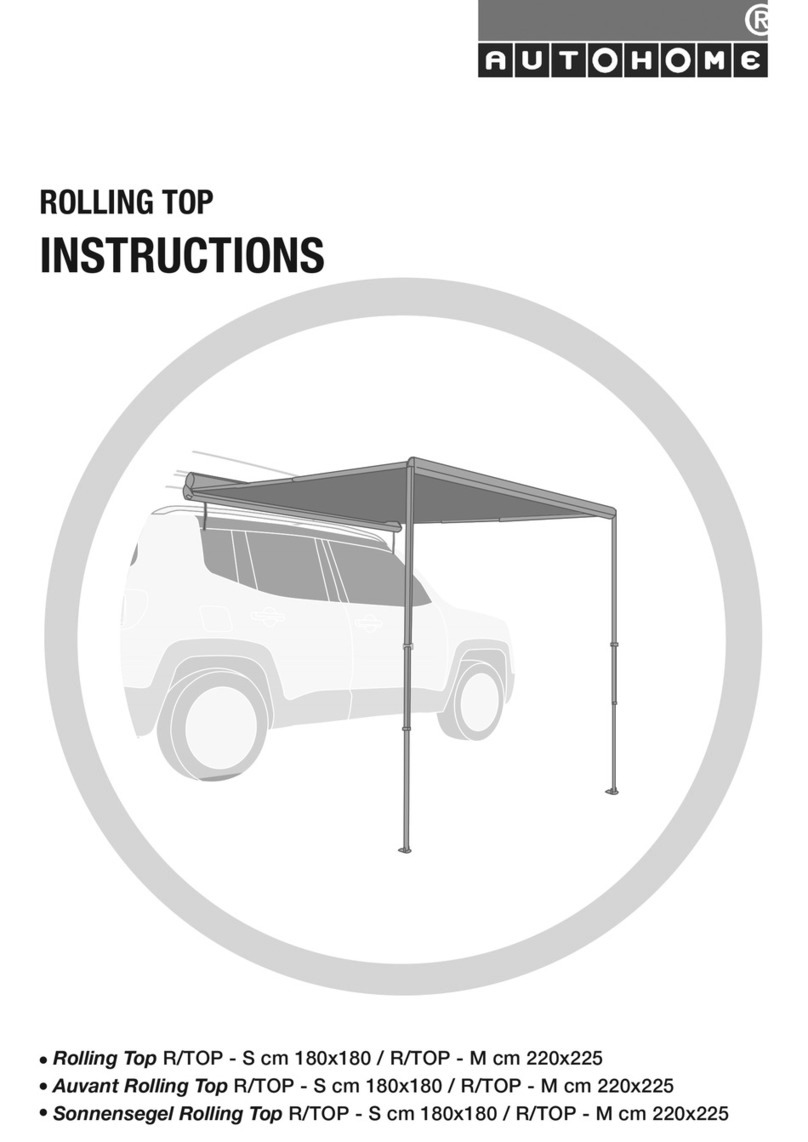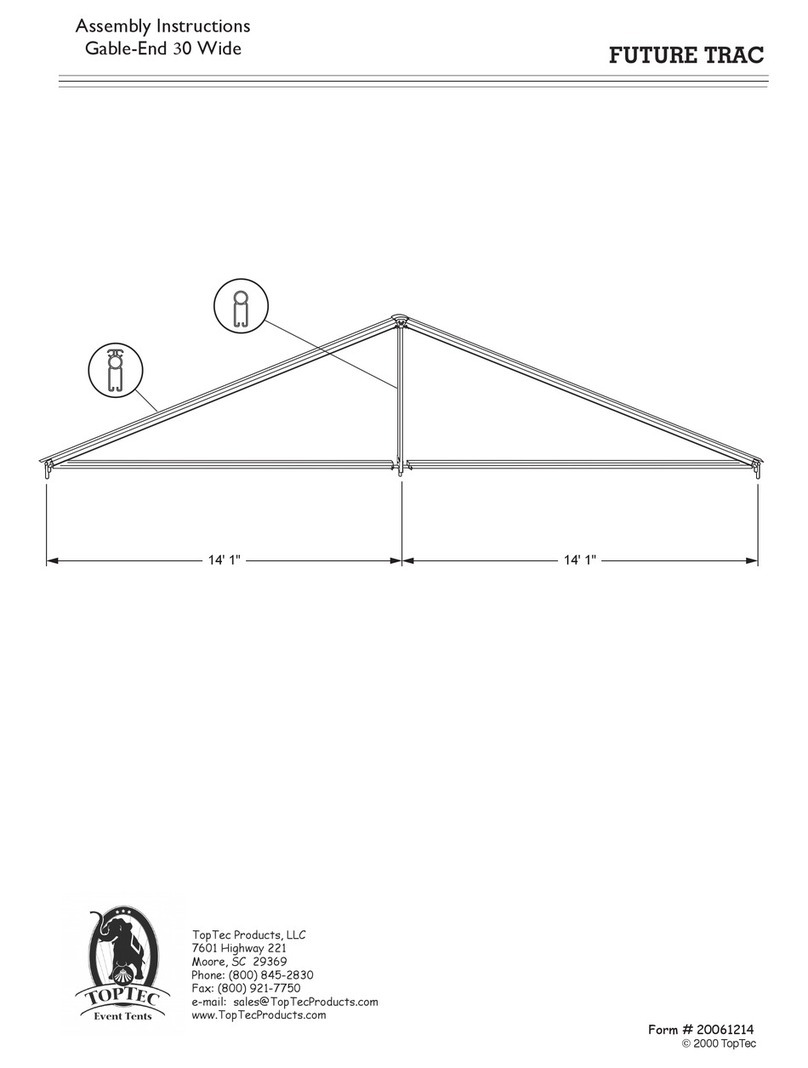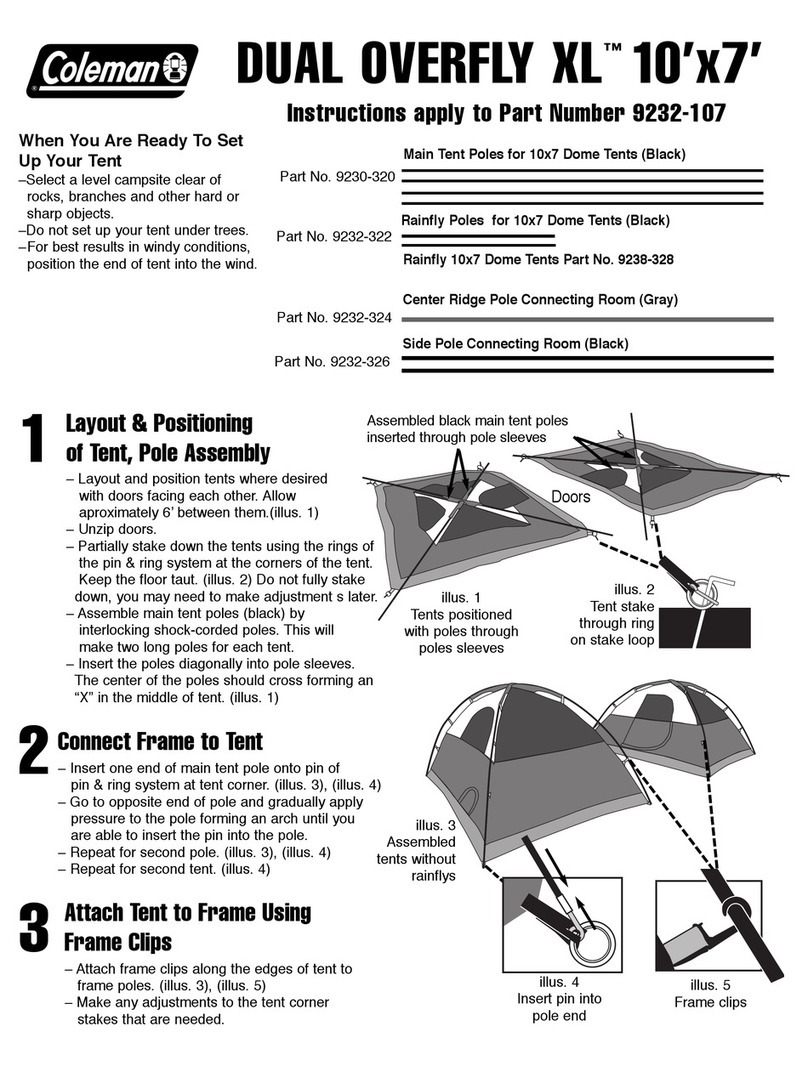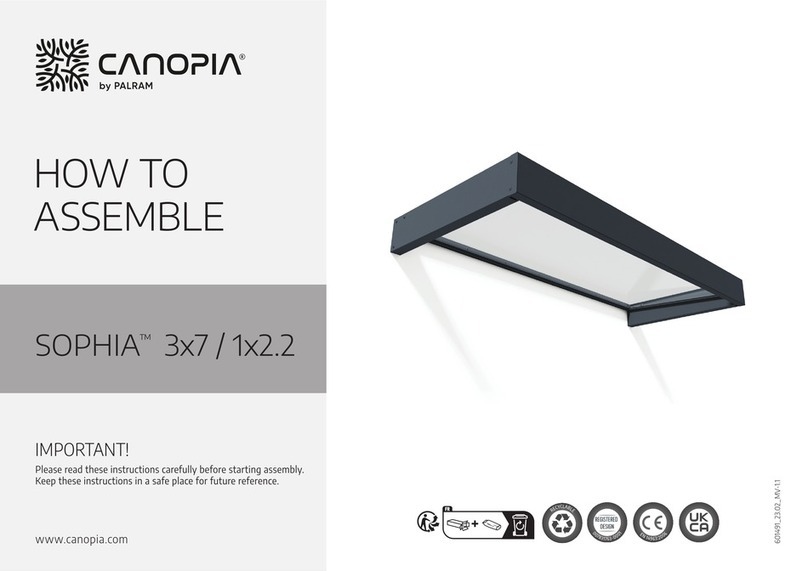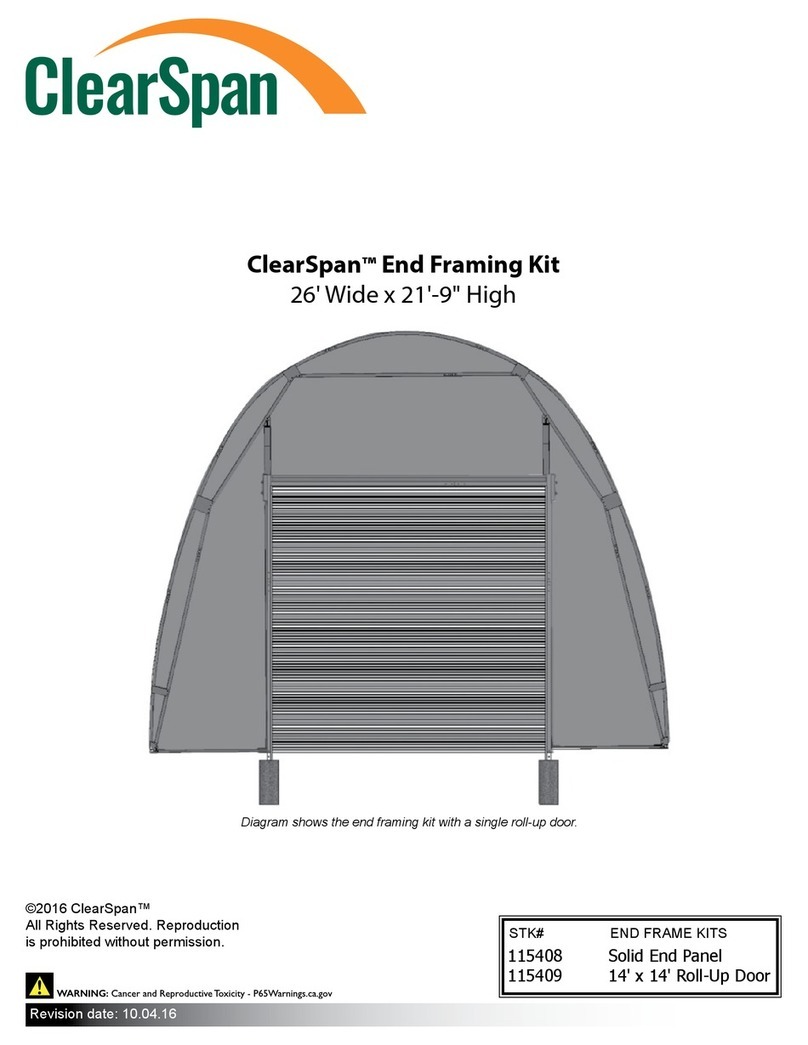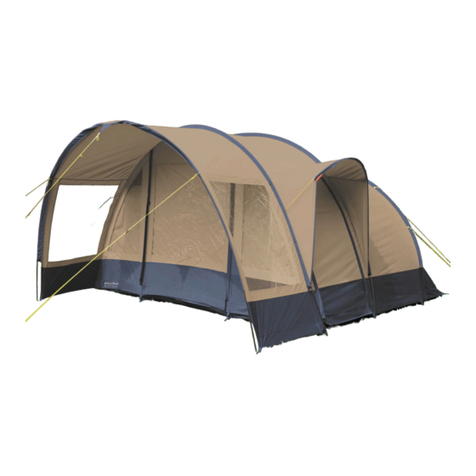AUTOHOME OVERZONE Standard User manual

1
ISTRUZIONI DI MONTAGGIO
ASSEMBLY INSTRUCTIONS
GEBRAUCHSANWHISUNGEN
INSTRUCTIONS DE MONTAGE
The o riginal i n the world - www.autohome.it
Tutti i modelli small e medium sono
predisposti per l’apertura Standard e
Explorer. Le guide a “C” sono premontate
dalla casa per apertura Standard
(a richiesta per apertura Explorer se
specificato nell’ordine). Per l’apertura
Explorer è necessario cambiare il
posizionamento di tali guide secondo i
fori d’origine predisposti sul pianale di
Overzone.
All small and medium models
prearranged for Standard and Explorer
opening. “C” slides are pre-assembled by
manufacturer for Standard opening (or by
request for Explorer opening, if indicated
on the order). For the Explorer opening it
is necessary to change the position of the
slides according to the original wholes on
the supporting surface of Overzone.
Alle Small-und Medium-Modelle sind
zur Standard-und Explorer-Öffnung
vorbereitet. Die C-förmigen Führun-
gen sind für Standard-Öffnung schon
voreingebaut (auf Anfrage sind dieselben
auch für Explorer – Öffnung voreingebaut
erhältlich). Was die Explorer-Öffnung
betrifft, ist es notwendig je nach den an
der Overzone-Grundfläche vorhandenen,
ursprünglichen Löchern das Positionieren
solcher Führungen zu ändern.
Tous les modèles small et medium sont
prédisposés pour l’ouverture Standard
et Explorer. Les guides à « C » sont
montées préalablement par le fabricant
pour ouverture Standard (sur demande
pour ouverture Explorer si indiqué dans la
commande). Pour l’ouverture Explorer, il
est nécessaire de changer la position des
guides d’après les trous originaux sur la
surface d’appui d’Overzone.
Apertura Standard
Apertura e ingresso laterali: si adatta a qualunque tipo di
autovettura. In questo caso le guide a “C” sono perpendi-
colari al mezzo pianale della tenda di misura cm. 110.
Standard Opening
Lateral opening and inlet: it is suitable for any kind of car.
In this case “C” slides are perpendicular to the half of the
supporting surface of the tent - measure 110 cm.
Standard-Öffnung
Seitliche Öffnung /seitlicher Eingang: für alle
Personenkraftwagen geeignet. In diesem Fall sind die C-
förmigen Führungen auf die Hälfte der Grundfläche eines
cm 110-Zelts senkrecht.
Ouverture Standard
Ouverture et entrée latérales: ce type d’ouverture est
indiqué pour tout type de voiture. Dans ce cas, les guides
à «C» sont perpendiculaires à la moitié de la surface
d’appui de la tente - mesure 110 cm.
Apertura Explorer
Apertura e ingresso posteriori: è indicato su alcuni tipi di
fuoristrada. In questo caso le guide a “C” sono
parallele al mezzo pianale della tenda di misura cm. 110.
Explorer Opening
Lateral opening and inlet: it is suitable for some kinds of
land rover. In this case “C” slides are parallel to the half
of the supporting surface of the tent - measure 110 cm.
Explorer-Öffnung
Hintere Öffnung/hinterer Eingang: für einige Gelände-
fahrzeuge geeignet. In diesem Fall sind die C-förmigen
Führungen zur Hälfte der Grundfläche eines cm 110-Zelts
parallel.
Ouverture Explorer
Ouverture et entrée postérieures: ce type d’ouverture est
indiqué pour quelques types de tout-terrain. Dans ce cas,
les guides à «C» sont parallèles à la moitié de la surface
d’appui de la tente - mesure 110 cm.
Le guide a “C” e i relativi morsetti consentono un rapido
montaggio, permettendo di personalizzare la disposizione
sul tetto dell’auto, evitando qualunque tipo di foratura.
“C” slides and their relevant clamps assure a quick
assembling, allowing to customize the disposition of
the tent on the roof of the car and to avoid any need of
drilling.
Die C-förmigen Führungen und die entsprechenden
Klemmen ermöglichen eine schnelle Montage und
dadurch ist eine Anbringung am Autodach ohne
Bohrungen möglich.
Les guides à «C» et les bornes relatives assurent un
montage rapide, en permettant de personnaliser la
disposition de la tente sur le toit de la voiture et d’éviter
toute nécessité de perçage.
Dopo aver fissato le barre da tetto portatutto al veicolo,
verificare la distanza fra le due barre (L 70 cm min.) e
che l’attacco sia idoneo.
After having fastened roof rack bars to the vehicle, check
the distance between the two bars (L 70 cm Min.) and
control that the connection is correct.
Nach der Befestigung der Trägerstangen am Fahrzeug
ist der
Abstand zwischen den zwei Stangen festzustellen (Breite
mindestens 70 cm), sich außerdem versichern, daß das
Verbindungsstück angemessen ist.
Après avoir fixé les barres portatives pour le toit au
véhicule, contrôler la distance entre les deux barres (L 70
cm min) et vérifier que l’attelage soit correct.
Di serie Overzone viene corredata di 8 piastrine con relativa viteria.
Overzone is supplied complete of 8 plates with their bolts and nuts.
Overzone ist mit 8 Plättchen mit entsprechenden
Schrauben serienmäßig versehen.
Overzone est fournie pourvue de 8 plaquettes avec les vis relatives.
cm.110
C
cm.110
C
C
D
L
Standard Explorer
B
A

Disporsi sui fianco del veicolo e sollevare la tenda da
tetto. Dopo averla appoggiata sulle barre da tetto
portatutto, scegliere la posizione desiderata.
Being at vehicle side, lift up the roof tent. After leaning
it on the attachment roof bars, choose the position you
wish.
Sich an die Seite des Fahrzeugs stellen und das Dachzelt
heben. Nachdem man das Zelt an die Dachträgerstangen
lehnt, die gewünschte Stellung wählen.
Se placer au côte du véhicule et soulever la tente de toit.
Après l’avoir appuyée sur les barres de toit d’attelage,
choisir la position désirée.
Inserire 4 morsetti nelle guide fissate sotto la base.
Insert 4 clamps in the slides fastened under the base.
In die Führungen unter der Grundfläche 4 Klemmen
einsetzen.
Insérer 4 bornes dans les guides fixées au-dessous de
la base.
Sollevare parzialmente l’angolo della tenda inse-rendo
due piastrine nelle viti. Questa operazione va effettuata
per i quattro punti di aggancio.
Partially lift the edge of the tent inserting two plates in
the screws. This operation shall be carried out for the
four connection points.
Die Zeltecke teilweise heben und zwei Plättchen in die
Schrauben einsetzen. Dieses Verfahren ist für die vier
Verbindungsstellen auszuführen.
Soulever partiellement le coin de la tente et insérer deux
plaques dans les vis. Cette opération doit être effectuée
pour les quatre points d’accrochement.
Unire le viti nei quattro punti di aggancio con le piastrine
e i relativi dadi con chiave n.10 mm (serraggio 6 Nm).
Dopo l’installazione percorrere un breve tratto di strada e
quindi effettuare un accurato controllo del serraggio delle
viti (comprese quelle portatutto).
Il controllo del serraggio deve avvenire a cadenze
periodiche e, ogni giorno, nel caso si viaggi su terreno
accidentato o sterrato.
Join the screws with the plates and the relevant nuts
in the existing four joining points by a 10 mm wrench
(tightness 6 Nm).
After the installation drive the vehicle for a short route,
then accurately check the screws tightening (including
the attachment ones).
The check of the tightening shall occur at periodical
intervals or every day in case of bumpy street.
Die Schauben sind durch 10 MM-Schlüssel mit den
Plättchen und den entsprechenden Muttern in den
vorhandenen vier Verbindungsstellen zu verbinden
(Spannung 6 Nm).
Nach der Installation durch eine kleine Strecke
durchfahren und dann eine sorgfältige Nachprüfung
der Schraubenspannung durchführen (einschl. der
Dachträgerschrauben).
Die Nachprüfung der Spannung soll nach periodischen
Zeitabständen oder, beim Fahren an aufgeworfenen oder
Schotterstrassen, jeden Tag erfolgen.
Assemblez les vis dans les quatre points d’accrochage
avec le plaquettes et les relatifs écrous par une clé n.10
mm (serrage 6 Nm).
Après l’installation parcourez un petit bout de chemin et
ensuite effectuez un contrôle soigné du serrage des vis
(y comprises celles de l’attachement).
Le contrôle du serrage doit être effectué périodiquement
et tous les jours au cas ou vous voyagez sur des terrains
accidentés ou cahoteux.
Dopo aver rimosso la cappottina in PVC,
sganciare le due cinghie posizionate sul lato
opposto all’ingresso.
After having removed PVC coating, unfasten the two belts
on the opposite side of the tent’s inlet.
Nach der Entfernung der PVC-Transporthaube sind
beide Gurte an der eingangsgegenüberliegenden Seite
abzuschnallen.
Après avoir enlevé la couverture en PVC, décrocher les
deux courroies qui se trouvent sur l’autre côté par rap-
port à l’entrée.
Portare i perni degli agganci P1 e P2 in appoggio alle
piastre laterali della scala. In questo modo la scala è
sbloccata.
Lean P1 and P2 fastening elements’ pins against the
lateral plates of the ladder. By doing this, the ladder is
unlocked.
An den seitlichen Leiterplatten die Stifte der P1- und
P2-Kupplungen positionieren. Dadurch wird der Leiter
freigegeben.
Porter les pivots des accrochages P1 et P2 en appui aux
plaques latérales de l’échelle. Cela faisant l’échelle est
débloquée.
Allungare parzialmente la scala e bloccarla di nuovo
mediante i perni degli agganci P1 e P2.
Partially extend the ladder and lock it again by the pins of
P1 and P2 couplings.
Die Leiter teilweise verlängern, danach durch P1- u. P2-
Kupplungszapfen dieselbe wieder befestigen.
Allonger l’échelle de façon partielle et la bloquer de
nouveau grâce aux chevilles d’accrochage P1 et P2.
Tirare leggermente la scala verso di sé per circa 50cm e
fare leva verso il basso.
La tenda si apre da sola.
Attenzione: prima di effettuare questa manovra, ac-
certarsi che la parte a sbalzo della scala sia sempre
bloccata dai rispettivi agganci a molla P1 e P2.
Gently pull the ladder to yourself for about 50 cm and
lever downwards. The tent will open by itself.
Attention: before carrying out this operation, be sure that
the projecting part of the ladder is always locked by the
relevant spring fastening elements P1 and P2.
1
5
C
A
2
P2
P1
7
P2
P1
6
B
3
4
8
2

Ca. cm 50 die Leiter gegen sich leicht ziehen und nach
unten den Hebel ansetzen.
Das Zelt öffnet sich von selbst.
Achtung: sich vor diesem Verfahren versichern, dass das
vorspringende Leiterteil durch die entsprechenden P1
und P2 Federkupplungen befestigt ist.
Tirer légèrement l’échelle vers soi pour 50 cm environ et
faire pression vers le bas.
La tente va s’ouvrir toute seule.
Attention: avant d’effectuer cette opération s’assurer
que la partie en saillie de l’échelle soit toujours bloquée
par les accrochages P1 et P2 à ressort prévus à cet effet.
La perfetta inclinazione della scala (30°) si ottiene
trasportando la scala verso l’esterno fino a raggiungere la
massima apertura consentita dallo snodo superiore.
Perfect inclination of the ladder can be obtained by
transporting it outwards until it reaches the maximum
opening allowed by the upper joint.
Zur einwandfreien Leiterneigung (30°) ist die Leiter nach
aussen zu transportieren, bis die maximale durch das
obere Gelenk ermöglichte Öffnung
erreicht wird.
L’inclinaison parfaite de l’échelle (30°) peut être obtenue
en transportant l’échelle vers l’extérieur jusqu’à arriver
au maximum d’ouverture possible d’après le joint
supérieur.
Tirando la centina verso l’esterno dispiegare il tessuto
della tenda.
By pulling the tent’s extension framework outwards,
unfold the tent’s fabric.
Nach aussen das Zeltverlängerungsgerüst ziehen, um
das Zeltgewebe auseinander zu falten.
Tirer le support vers l’extérieur et déplier le tissu de la
tente.
Dopo aver disteso il tessuto provvedere al
bloccaggio della centina mediante i 2 blocchi previsti.
After having unfolded the fabric, block the edge by the
two specially provided 2 locking elements.
Nach dem Auseinanderfalten des Gewebes, durch beide
mitgelieferte Befestigungselemente das Zeltverlän-
gerungsgerüst befestigen.
Après avoir déplié le tissu, bloquer le support grâce aux 2
bloc-systèmes prévus à cet effet.
Attenzione: la scala deve necessariamente essere in
piano. Nel caso di suolo instabile (fango o sabbia), si con-
siglia di utilizzare un qualsiasi elemento che impedisca
l’affondamento dei piedini della scala.
Attention: the ladder shall necessarily be leant on a
plane surface. In case of unstable soil (mud or sand), we
suggest to utilize any element allowing to avoid ladder’s
feet sinking.
Achtung: die Leiter muss eben positioniert werden. Bei
unstabilem Boden (Schlamm oder Sand) empfiehlt es
sich zu diesem Zweck
irgendwelches Element zu benutzen, um ein Versinken
der Leiterfüsse zu vermeiden.
Attention: l’échelle doit nécessairement être appuyée
sur une surface plane. En cas de sol instable (boue ou
sable), on conseille d’utiliser tout élément que ce soit
pour empêcher l’enfoncement des pieds de l’échelle.
La zona opposta all’ingresso è dotata di una grande
apertura che si arrotola per mezzo di elastici predisposti
all’interno della tenda.
Inlet area is provided with a big opening that can be
rolled-up by means of some elastics inside the tent.
Die gegenüber dem Eingang liegende Fläche ist mit einer
grossen Öffnung, die durch sich innerhalb des Zeltes
befindende, dazu bestimmte Gummibänder zusammen-
zurollen ist, versehen.
La partie opposée à l’entrée est dotée d’une grande
ouverture qui s’enroule grâce aux
élastiques installés à l’intérieur de la tente.
L’apertura e la chiusura degli oscuranti esterni viene
effettuata dall’interno della tenda mediante le corde.
Trasportando la corda verso il basso l’oscurante si
chiude, verso l’alto si apre.
Attenzione: Effettuare le operazioni con
cautela, non forzare la corda a fine corsa. Il tessuto
potrebbe danneggiarsi in corrispondenza delle borchie.
The opening and closing of external obscuring
elements is carried out from the inside of the tent by
means of specially provided strings.
By pulling downwards the string, the obscuring
element will close, by pulling it upwards it will open.
Attention: carry out these operations with caution. Do
not force the string at its end of stroke. The
fabric could be damaged in metallic rings area.
Die Öffnung bzw. die Schliessung der
Aussenverdunkelungselemente wird durch die dazu
bestimmten Leinen von innen durchgeführt.
Mit Leine nach unten schliesst sich das
Verdunkelungselement, mit Leine nach oben öffnet sich
dasselbe.
Achtung: bei diesen Verfahren vorsichtig vorgehen, die
Leine ist nicht mit zu viel Kraft zu ziehen. Das Gewebe
könnte bei den Metallringen beschädigt werden.
L’ouverture et la fermeture des parties d’obscurcissement
externes sont effectuées de l’intérieur de la tente a l’aide
des ficelles prévues à cet effet.
En tirant la ficelle vers le bas, la partie d’obscurcissement
va se fermer; en la tirant vers le haut, celle-ci va s’ouvrir.
Attention: effectuer les opérations soigneusement, ne
pas forcer la ficelle au fin de course.
Le tissu pourrait s’endommager en correspondance des
bagues métalliques.
I due paletti in dotazione permettono di ottenere un
comodo tendalino.
The two posts given in the equipment allow to obtain a
comfortable awning.
Durch die zwei mitgelieferten Pflöcke ist es möglich ein
bequemes Sonnensegel zu erhalten.
Les deux piquets fournis en dotation permettent d’obtenir
un auvent très pratique.
30°
9
10
11
12
13
14
15
3

TENT’S CLOSING PROCEDURE
ZELTSCHLIESSUNG
FERMETURE DE LA TENTE
CHIUSURA DELLA TENDA
Solamente per due elastici va annodato un terzo gancio
in posizione centrale, così da ottenere 4 elastici pronti
per essere agganciati (vedi fig. 3).
Only for two elastic strings, a third hook shall be knoted
in the middle, in order to obtain 4 elastic strings ready to
be knoted (see fig. 3).
Nur bei zwei elastischen Schnüren ist ein dritter Haken in
der Mitte zu verknoten, sodaß 4 Schnüre
verbindungsbereit sind (siehe fig. 3).
Un troisième crochet doit être noué en position centrale
dans seulement deux cordes élastiques; cela faisant on
obtient 4 cordes élastiques prêtes pour être accrochées
(voir fig. 3).
Ecco come devono apparire le corde elastiche con i ganci
correttamente annodati.
In this picture you can see how the elastic strings are
property knoted with the hooks.
In der Abbildung kann man sehen, wie die elastischen
Schnüre mit richtig verknoteten Haken sein sollen.
Voilà comment les cordes élastiques doivent se
présenter, avec les crochets correctement noués.
Agganciare le corde elastiche nei rispettivi anelli,
collocati nei fianchi interni della tenda.
Hook the elastic strings in the special rings being in the
inner sides of the tent.
Die elastischen Schnüre sind in die entsprechenden
Ringe an den Zeltinnenseiten zu verbinden.
Accrocher les cordes élastiques aux bagues
correspondantes, qui se trouvent dans les côtés internes
de la tente.
Prima di chiudere la tenda agganciare le corde fra loro
tramite il gancio centrale.
Before closing the tent, the strings shall be hooked
between themselves by the in-between hook.
Vor der Zeltschliessung sind die Schnüre durch den
Mittelhaken zwischeneinender zu verbinden.
Avant de fermer la tente accrocher les cordes entre eux à
l’aide du crochet central.
La tensione degli elastici verso l’interno, facilita il
ripiegamento del tessuto all’interno della tenda.
Inward tension of the elastics helps fabric folding in the
tent.
Die Spannung der Gummibänder nach innen erleichtert
die Gewebezusammenfaltung innerhalb des Zeltes.
La tension des élastiques vers l’intérieur aide le pliage du
tissu à l’intérieur de la tente.
CORDE ELASTICHE
THE ELASTIC STRINGS
ELASTISCHEN SCHNÜRE
CORDES ÉLASTIQUES
n°pz.10
n°pz.4
A
B
C
In fase di chiusura della tenda le corde
elastiche facilitano il ripiegamento del
tessuto all’interno.
The elastic strings simplify the Fabric’s
folding inside during Tent closure.
Die elastischen Schnüre erleichtern bei
der Schliessung des Zeltes die Geweb-
ezusammenfaltung.
Les cordes élastiques aident le replie-
ment du tissu en phase de fermeture de
la tente.
D
Alle due estremità di ogni elastico va fissato il gancio
mediante un semplice nodo.
The hook shall be fixed by a simple knot at both ends.
Der Haken ist durch einen einfachen Knoten an den
beiden Enden zu befestigen.
Le crochet doit être fixé aux deux extrémités de chaque
corde élastique à l’aide un simple nœud.
E
16
4

Prima di chiudere la tenda è necessario sbloccare la
centina allentando i blocchi interni. Attenzione: non
ripiegare mai la tenda senza aver allentato i blocchi
interni perché potrebbe lacerarsi il tessuto in corrispon-
denza delle asole predisposte nel tessuto.
Before closing the tent it is necessary to unlock the tent’s
extension framework by loosening the internal blocks.
Attention: never fold the tent without having loosened the
internal locks: this could tear the fabric in the knobs’ area.
Vor einer Zeltschliessung ist es notwendig durch die
Innenbefestigungselemente das Zeltverlängerungsgerüst
zu lösen.
Achtung: vor dem Zusammenfalten des Zeltes sind die
Innenblockierungen an den Gasdruckfedern zu lockern,
ansonsten könnte der Zeltstoff an den Ösen abreissen.
Avant de procéder à la fermeture de la tente, il est
nécessaire de débloquer le support en desserant les
bloc-systèmes à l’extérieur.
Attention: ne pas replier la tente sans avoir dévissé
les blocs à l’intérieur car le tissu pourrait se lacérer au
niveau des boutonnières.
Prima di sollevare la scala e procedere alla chiusura della
tenda, è necessario aver ripiegato completamente la
parte a sbalzo verso l’interno della tenda.
Before lifting the ladder and proceeding with the tent’s
closing, it is necessary to have the projecting part com-
pletely folded inwards, inside the tent.
Vor einem Leiteraufheben bzw. einer Zeltschliessung ist
es notwendig den vorspringenden Teil gegen die Zeltin-
nenseite völlig wieder zusammenzulegen.
Avant de soulever l’échelle et refermer la tente, il est
nécessaire de replier complètement la partie en saillie
vers l’intérieur de la tente.
Accertarsi che il tessuto sia perfettamente ripiegato
verso il centro della tenda.
Make sure that the fabric is thoroughy folded towards
the middle of the tent.
Sich versichern, daß das Gewebe ganz genau gegen die
Zeltmitte zusammengefaltet ist.
S’assurer que le tissu soit parfaitement plié vers le
centre de la tente.
Risvoltare anche il tessuto su tutti gli angoli.
Reverse also the fabric on angles.
Ausserdem sind alle Geweberänder zu wenden.
Renverser le tissu aux angles, aussi.
Chiudere la tenda con i due ganci predisposti sul lato di
ingresso.
Close the tent by the two specially provided hooks on
inlet side.
Durch die beiden Haken an der Eingangsseite das Zelt
schliessen.
Fermer la tente à l’aide des deux crochets prévus à cet
effet sur le côte de l’entrée.
Calzare la cappottina in modo graduale e uniforme.
Gradually and uniformly slide PVC coating in its case.
Stufenweise und gleichmässig die Transporthaube
positionieren.
Faire glisser graduellement et uniformément la couver-
ture en PVC dans son conteneur.
Agganciare con cura tutti gli elastici negli appositi ganci.
Hook with care all elastics to the specially provided
hooks.
Alle Gummibänder in die dazu bestimmten Haken
sorgfältig anhaken.
Accrocher avec du soin tous les élastiques aux crochets
prévus à cet effet.
Fissare la cappottina mediante gli appositi tiranti.
Attenzione: raddoppiare l’elastico sull’angolo della
tenda. Per ottenere il miglior isolamento e impedire
qualunque infiltrazione di acqua, sabbia ecc. è neces-
sario che l’elastico sia ben tirato: regolare la lunghezza
dell’elastico, inoltre accertarsi che il Pvc della cappottina
sia aderente alla base della tenda.
Fasten the PVC coating by the specially provided pulling
elements.
Attention: double the elastic on the tent’s angle. To
obtain the best insulation level and prevent any water or
sand infiltration from occurring, it is necessary for the
elastic to be well-tightened: adjust the elastic’s length
and check for the Pvc covering to be perfectly adherent
to the base of the tent.
Durch die dazu bestimmten Zugstangen die
Transporthaube befestigen.
Achtung: an der Zeltecke muss das Gummiband
zweifach sein. Zur Erzielung einer guten Isolierung, zwar
zur Verhinderung von Versicherungen (Wasser, Sand u. s.
w.), ist es notwendig das Gummiband sehr gut zu span-
nen: die Gummibandlänge einstellen, sich ausserdem
versichern, daß das Abdeckungs-PVC-Material an der
Zeltgrundfläche vollkommen haftet.
Fixer soigneusement la couverture en PVC à l’aide des
tirants prévus à cet effet.
Attention: doubler l’élastique sur l’angle de la tende. Afin
d’obtenir un isolement optimal (soit d’empêcher toute in-
filtration d’eau, de sable etc...) il faut que l’élastique soit
bien tiré : régler la longueur de l’élastique et s’assurer
que le Pvc de la capote adhère parfaitement à la base
de la tente.
19
17
20
21
22
23
The original in the world - www.autohome.it
24
x2
25
5
ATTENZIONE / ATTENTION / ACHTUNG /
ATTENTION
ê
!
ATTENZIONE / ATTENTION / ACHTUNG /
ATTENTION
ê
!

6
WARRANTY INFORMATION
GEWÄHRLEISTUNG UND GARANTIE
INFORMATIONS CONCERNANT LA GARANTIE
INFORMAZIONI GARANZIA
GARANZIA
Ogni prodotto Autohome è stato studiato nei
minimi particolari e realizzato con i materiali più
idonei all’utilizzo a cui sarà sottoposto.
La cinquantennale esperienza sui prodotti ha
consentito di scegliere materiali idonei testati
nelle più diverse condizioni climatiche e di
viaggio.
I severi controlli “Qualità Autohome” garan-
tiscono un prodotto privo di difetti di materiali e
di confezione.
Qualora si evidenziassero questi tipi di difetti ci
si può avvalere, della Garanzia di durata 2 Anni
dalla data di acquisto del prodotto.
Nello specifico, ci si può avvantaggiare di una
Garanzia di durata 5 anni* per quanto riguarda
i componenti del sistema di apertura delle
tende (*vedere note nelle istruzioni allegate
al prodotto o richiedere informazioni: e-mail:
info@autohome.it).
Ogni tenda Autohome è contrassegnata da un
Numero di Serie (etichetta rilevabile sulla fascia
interna della porta di ingresso delle tende) che
contraddistingue la tenda e i controlli di qualità
a cui è stata sottoposta.
WARRANTY
Each Autohome tent is marked by a Serial
Number (label on the internal side of tents’ inlet
door), which distinguishes the tent and indicates
the quality controls it has undergone.
Every single Autohome product has been
studied in detail and carried out by utilizing the
most suitable materials for its expected use.
The fifty-year experience concerning the
products allowed the Company to choose
suitable materials tested in any different
weather and travel conditions.
Strict “Autohome Quality” controls assure that
the product is faultless both concerning
materials and construction.
Should such faults appear, it is possible to make
use of the Warranty, which is valid for 2 years
from the product’s purchasing date.
Namely, it is possible to make use of a 5-year
valid Warranty* concerning the components
of tents’ opening system (*see notes in the
instructions given with the product or ask for
GEWÄHRLEISTUNG
Jedes Autohome Produkt ist von heruasragen-
der Konstruktion und besteht aus Materialien,
die für diesen Gebrauch am besten geeignet
sind.
Durch 50 Jahre Erfahrung des
Herstellers wurden nur die besten Materialen
verwendet, die zuvor aufwändig getestet
wurden, besonders im Hinblick auf klimatische
und mechanische Belastungen.
Die strengen Autohome Qualitäts Kontrollen
garantieren ein Produkt, das frei von
Material- und Verpackungsfehlern ist. Falls aber
trotzdem Mängel auftauchen sollten, gilt eine
Gewährleistung von 2 Jahren ab Kaufdatum des
Produktes.
Darüber hinaus gibt der Hersteller eine
Garantie von 5 Jahren* auf die Bestandteile
des Öffnungssystems der Zelte. Die GArantie
beschränkt sich auf den Ersatz der fehlerhaften
Teile. (*siehe unter info@autohome.it).
Jedes Zelt ist mit einer Seriennummer
versehen, die einlaminiert im Boden beim
Zelteingang angebracht ist. Dadurch kann der
Fertigungsprozess im Zweifelsfall nachvollzogen
werden.
GARANTIE
Chacun des articles fabriqués par Autohome a
été étudié dans les moindres détails et réalisé
à l’aide des matériaux les plus adaptés à leur
utilisation.
Grâce à 50 ans d’expérience dans le produit, le
fabricant a su choisir les meilleurs
matériaux, préalablement testés pour résister
aux conditions climatiques et de voyage les plus
disparates.
Les sévères contrôles de « Qualité Autohome »
auxquels sont soumis les produits, garantis-
sent l’absence de tout défaut concernant les
matériaux et la fabrication.
Si toutefois l’un de ces défauts existaient,
vous pouvez avoir recours à la Garantie d’une
durée de 2 Ans à compter de la date d’achat
du produit.
Vous pouvez, en particulier, avoir recours à
une Garantie de 5 ans* en ce qui concerne
les composants du système d’ouverture de la
tente (* voir les notes indiquées dans le livret
d’instructions du produit ou s’adresser pour
toutes informations complémentaires à:
info@autohome.it).
Chaque tente Autohome possède un Numéro de
Série (indiqué sur l’étiquette située sur la bande
interne de la porte d’entrée de la tente) permet-
tant d’identifier la tente ainsi que les contrôles
de qualité auxquels elle a été soumise.
1. INFORMAZIONI GARANZIA
Ricordando che l’affidabilità e il soddisfacente
funzionamento degli articoli dipendono in larga
misura dal rispetto delle istruzioni allegate al
prodotto si precisa che:
1.1 La garanzia non copre i difetti causati da
utilizzo improprio o dovuti alla normale usura
dei componenti;
1.2 l’acquirente deve riconsegnare l’articolo
difettoso al punto vendita in cui ha effettuato
l’acquisto unitamente allo scontrino fiscale
(condizione di validità della garanzia).
1.3 Gli eventuali difetti visivi dovranno essere
comunicati entro 10 giorni dalla consegna della
merce. Il difetto lamentato, possibilmente docu-
mentato da fotografie comprovanti, deve essere
comunicato al fabbricante indicando Numero di
Serie del prodotto.
1.4 Non si accettano resi senza autorizzazione
scritta.
1.5 Non si accettano resi di merce utilizzata.
1.6 Il ritorno della merce dovrà essere preven-
tivamente concordato con la Casa fabbricante
e spedito in porto Franco Destino Rivarolo
Mantovano (MN), Italia con imballo originale o
comunque adeguato (non si accettano ritorni
senza autorizzazione scritta).
1.7 Se il difetto lamentato sarà riconosciuto fon-
dato, il Fabbricante provvederà al rimborso delle
spese di trasporto, per un chilometraggio via
terra limitato (Max 3000 km.). Ogni singolo caso
extraeuropeo dovrà essere preventivamente
concordato e autorizzato dal Fabbricante.
1.8 Se il difetto risulta non coperto da Garanzia,
la riparazione sarà eseguita a costi contenuti
compresi quelli di spedizione, precisando che le
spese di trasporto sono a carico dell’acquirente.
1.9 Il fabbricante provvederà, a sua discrezione
a sostituire o riparare l’articolo.
1. WARRANTY INFORMATION
Whereas reliability and correct functioning of
articles mostly depend on the respect of the
instructions given with the product, we point out
what follows:
1.1 The warranty does not cover defects due
to improper use or to normal wear of the
components;
1.2 The purchaser shall return the defective
article to the outlet in which it has been pur-
chased together with the till receipt (condition
for warranty validity);
1.3 Any possible visual defect shall be commu-
nicated within 10 days from goods delivery. The
claimed defect, substantiated by pictures if pos-
sible, shall be communicated to manufacturer
indicating the Serial Number of the product;
1.4 Returns of goods without a written Manu-
facturer’s authorization are not allowed;
1.5 Returns of used goods are not allowed;
1.6 Goods return shall be previously agreed
with Manufacturer and shipped free delivered
to Rivarolo Mantovano (Mn) with original
packaging or anyway with a suitable packaging
(no goods return without written authorization
is accepted);
1.7 In the event a complaint results in a sound
reason, i.e. an existing defect, Manufacturer
will provide reimbursing the freight costs for
a transport by truck by considering a limited
distance in kilometres (Max 3000 kms). In case
of non-European deliveries, each case shall be
agreed in advance with Manufacturer as well as
authorized by the latter;
1.8 If the defect is not covered by warranty, a
repair will be carried out at reasonable costs
and in such cases freight costs are at
purchaser’s charge;
1.9 The manufacturer shall provide at his
discretion for the replacement or repairing of
the article.
1. INFORMATIONEN ZUR GARANTIE
Die Zuverläss igkeit und das perfekte
Funktionieren der Produkte hängt auch vom
Befolgen der Gebrauchsanweisung des
Produktes ab. Detaillierte Erläuterung:
1.1 Die Garantie deckt keine Schäden, die durch
falschen Gebrauch entstanden sind, und deckt
auch keine Schäden ab, die durch normalen
Gebrauch entstanden sind;
1.2 Der Käufer muss den defekten Artikel
zusammen mit dem Kassenbeleg zum Verkäufer
bringen. (Die Garantie gilt nur mit Kassenbeleg);
1.3 Sichtbare Schäden müssen in einem
angemessenen Zeitraum nach Warenerhalt
mitgeteilt werden. Die festgestellten Schäden
sollten fotografisch dokumentiert und festge-
halten werden. Außerdem muss dem Hersteller
die Seriennummer mitgeteilt werden;
1.4 Sendungen jeglicher Art direkt an den Her-
steller sind nur nach schriftlicher Zustimmung
möglich,andernfalls gehen sie unbearbeitet zu
Lasten des Absenders zurück.
1.5 Retouren von benutzter Ware sind nicht
zulässig.
1.6 Das Retournieren der Ware muss vorab mit
dem Hersteller abgesprochen werden. Die Ware
ist dann frei Haus Rivarolo Mantovano (Mn) zu
senden.Die Originalpackung oder eine andere
passende Verpackung muss verwendet werden
(Zurückgeschickte Ware ohne schriftliche Bestä-
tigung wird nicht entgegengenommen);
1.7 Wird eine Beanstandung im Rahmen der
Gewährleistung anerkannt, übernimmt der
Hersteller die Kosten im gesetzlich vorgeschrie-
benen Rahmen. Außergemeinschaftliche ( Länder
außerhalb der EU ) Vorgänge sind grundsätzlich
im voraus mit dem Hersteller direkt zu klären.
1.8 Wird die Gewährleistung abgelehnt, kann
auf Wunsch des Kunden eine kostenpflichtige
Reparatur durchgeführt werden. In diesem Fall
gehen Reparatur und Transportkosten zu Lasten
des Kunden.
1.9 Der Hersteller wird nach seiner Entschei-
dung den Schaden reparieren oder das Produkt
ersetzen.
1. INFORMATIONS CONCERNANT LA GARANTIE
Sachant que la fiabilité et le bon fonctionnement
des produits dépendent essentiellement du
respect des instructions livrées avec le produit,
nous précisons toutefois les points suivants:
1.1 La garantie ne couvre pas les défauts liés
à une mauvaise utilisation du produit ni l’usure
normale de ses composants;
1.2 L’acheteur doit ramener l’article défectueux
dans le point vente dans lequel le produit a été
acheté avec son ticket de caisse (condition de
validité de la garantie);
1.3 Tout éventuel défaut visible devra être com-
muniqué dans un délai maximum de 10 jours
à compter de la livraison de la marchandise.
Le défaut objet de la plainte, si possible illustré
par des photographies, doit être communiqué
au fabricant en indiquant le Numéro de Série
de produit;
1.4 Aucun retour sans autorisation écrite ne
sera accepté;
1.5 Aucun retour de marchandise ayant déjà été
utilisée ne sera accepté;
1.6 Le retour de la marchandise devra être pré-
alablement autorisé par le fabricant et expédié
franco rendu au point de destination Rivarolo
Mantovano (MN) dans son emballage original
ou à défaut, dans un emballage adéquat (aucun
retour de marchandise ne sera accepté sans
autorisation écrite);
1.7 Si le défaut objet de la plainte se révèle
fondé, le Fabricant s’engage à rembourser les
frais de port routier à hauteur d’un maximum de
3000 km. Dans le cas de pays non européen, la
situation devra être préalablement autorisée en
accord avec le Fabricant.
1.8 Si le défaut n’est pas couvert par la Garan-
tie, la réparation sera effectuée selon un tarif
contenu, tout en tenant compte que les frais de
port restent à la charge de l’acquéreur.
1.9 Le fabricant décidera, suivant les cas, de
remplacer ou de réparer le produit. Si le défaut
n’est pas couvert par la Garantie, la réparation
et l’expédition seront effectuées au meilleur
prix.
ITALIANo ENgLISH DEUTSCH FRANÇAIS

7
2. AVVERTENZE IMPORTANTI
2.1 Qualsiasi elemento applicato sul
tetto del veicolo altera la normale conduzione
dell’automezzo, pertanto deve essere ridotta la
velocità nella misura adeguata.
2.2 E’ inoltre necessario considerare la qualità
del fondo stradale, l’intensità del traffico e le
condizioni ambientali.
2.3 Non superare il carico trasportabile sul tetto
ammesso dal costruttore del veicolo.
2.4 Chiudere perfettamente la tenda e control-
lare sempre il fissaggio del carico prima di
mettersi in viaggio.
2.5 La stessa operazione deve essere effettuata
anche approfittando delle piccole pause di
viaggio.
2.6 Massima cautela nel caso di trasporto di
bagaglio supplementare nei modelli di tenda
predisposti: è necessario considerare le carat-
teristiche di portata del veicolo, del portatutto
e del carico complessivo consentito che è
trasportato.
Si consiglia di leggere attentamente le istruzioni
tecniche a riguardo o richiedere informazioni
dettagliate a e-mail: info@autohome.it.
ll Fabbricante declina ogni responsabilità per
incidenti che dovessero accadere a causa di un
uso improprio o cattiva manutenzione o a causa
della mancata osservanza delle regole generali
d’uso allegate al prodotto.
Si raccomanda inoltre:
2.7 Non lasciare bambini in una tenda incus-
todita.
2.8 Attenzione alle altezze ammesse nei sot-
topassaggi, parcheggi coperti e tutti gli ostacoli
che impedendo il libero passaggio del veicolo
possono urtare la tenda e provocare danni alla
stessa: barriere, insegne stradali e pubblicitarie,
rocce sporgenti, piante, etc.
2.9 In caso di lavaggio auto + tenda presso
impianti automatici a rulli, assicurarsi che
l’impianto consenta l’operazione.
2.10 Non trasportare oggetti infiammabili o
pericolosi all’interno della tenda.
2.11 Non sostare o campeggiare in zone ad alto
rischio ambientale o durante la manifestazione
di fenomeni atmosferici straordinari (grandine
tifoni, uragani, esondazioni, alluvioni, frane,
etc.).
2.12 Massima prudenza nei viaggi off-road e
raid estremi.
2. IMPORTANT WARNING
2.1 Any element applied on the roof of the
vehicle alters its standard conditions; therefore,
it is necessary to suitably lower speed;
2.2 It is also necessary to consider the quality
of roadbed, traffic, environmental and weather
conditions;
2.3 Do not exceed maximum load allowed on
the roof given by the vehicle’s manufacturer;
2.4 Perfectly close the tent and always check
load fixing before leaving;
2.5 The same operation shall be carried out also
during trip pauses;
2.6 We suggest to pay the utmost attention in
case of transport of a supplementary luggage in
tents models allowing it; it is necessary to con-
sider the maximum load allowed on the vehicle,
on roof-rack and the total load transported;
We also suggest to carefully read technical
instructions concerning the matter or to ask
for detailed information by e-mail to: info@
autohome.it.
The manufacturer declines any responsibility
for any accident due to improper use, wrong
maintenance or for non-respect of general rules
concerning the use of the tent that have been
given with the product.
We also recommend to do the following:
2.7 Do not leave children in an unattended tent;
2.8 Pay attention to maximum height allowed
in subways, covered parking and to any of the
following obstacles: barriers, street signals and
advertising, prominent rocks, trees etc.;
2.9 In case of car + tent washing in automatic
car wash with rolls, be sure that it allows car +
tent washing;
2.10 Do not transport inflammable or dangerous
objects inside the tent;
2.11 Avoid parking or camping in high
environmental risk areas or during extraordinary
weather conditions appearance (typhoons, hur-
ricane, overflows, floods, land slide, etc.);
2.12 Pay the utmost attention during off-road
trips and extreme raids.
2. WICHTIGE HINWEISE
2.1 Das normale Fahren wird beeinträchtig, egal
was oder welches Element zusätzlich auf das
Dach des Autos geladen wird; die
Geschwindigkeit muss verringert und der
zusätzlichen Last angepasst werden;
2.2 Der Straßenzustand, das Verkehrsaufkom-
men und die Umweltverhältnisse müssen
ebenso berücksichtigt werden;
2.3 Die maximale Dachlast, die vom Autopro-
duzenten vorgegeben ist, darf nicht überschrit-
ten werden;
2.4 Bevor man die Reise fortsetzt, muss das
Zelt immer perfekt geschlossen werden und es
soll kontrolliert werden, ob die Last auch gut
festsitzt;
2.5 Nach jeweils 500km Fahrtstrecke müssen
alle Befestigungen kontrolliert werden.
2.6 Wenn zusätzliches Gepäck auf das
geschlossene Autodachzelt geladen wird
(bei den Zelten, wo diese Option vorgesehen
ist) sdarf die Zuladung des Fahrzeuges, des
Gepäckträgers und der gesamten Ladung nicht
überschritten werden. Lesen Sie die
Gebrauchsanleitung aufmerksam durch oder
Der Hersteller übernimmt keinerlei Haftung für
Unfälle, die aufgrund eines nicht fachgerechten
Gebrauchs, schlechter Instandhaltung oder nicht
Beachten der Vorschriften, (die dem Produkt
beigefügt sind) entstanden sind.
2.7 Lassen Sie Kinder nicht unbeaufsichtigt
im Zelt
2.8 Achten Sie auf die max. Höhe bei
Unterführungen, überdachten Parkplätzen und
anderen Hindernissen. Zu niedrige Höhen fügen
dem Zelt, sowie dem Auto Schaden zu.
2.9 Beim Autowaschen in automatischen
Waschanlagen muss man sich vorab vergewis-
sern ob das Dachzelt zugelassen ist;
2.10 Lassen Sie keine entzündlichen oder
gefährlichen Dinge im Zelt.
2.11 Übernachten Sie nicht in Gebieten, in
denen eine große Gefahr droht (Taifun, Hurrikan,
Überschwemmung, Erdrutsch usw.).
2.12 Größte Vorsicht ist bei Offroad Reisen oder
extremen Raids erforderlich.
2. INSTRUCTIONS IMPORTANTES
2.1 Tout élément chargé sur le toit du véhicule
altère la conduite normale du véhicule; il est,
par conséquent nécessaire de réduire la vitesse
de façon opportune.
2.2 Il faut en outre tenir compter de la qualité
des routes, de l’intensité de la circulation et des
conditions climatiques.
2.3 Ne pas dépasser le chargement maximum
sur le toit du véhicule admis par le fabricant.
2.4 Fermer la tente parfaitement et toujours
contrôler, avant le voyage, que le chargement
soit correctement fixé.
2.5 Cette même opération doit être à nouveau
effectuée pendant les petites pauses que vous
ferez au cours du voyage.
2.6 Nous vous recommandons de prêter la plus
grande attention quant au transport de bagages
supplémentaires concernant les modèles de
tentes prévus à cet effet: il faut tenir compte de
la portée du véhicule, de la galerie ainsi que de
la charge totale autorisée transportée.
Nous vous conseillons, à ce sujet, une lecture
attentive du livret d’instructions techniques ou
d’écrire pour de plus amples informations à:
info@autohome.it.
Le Fabricant décline toute responsabilité en cas
d’accidents imputables à une utilisation impro-
pre, à un mauvais entretien ou en cas de non
respect des instructions générales indiquées sur
le livret livré avec le produit.
Nous recommandons en outre:
2.7 De ne pas laisser d’enfants seuls dans une
tente sans surveillance.
2.8 De prêter attention aux hauteurs admises
dans les passages sous-terrains, les parkings
couverts et tous les obstacles tels que:
barrières, panneaux routiers et publicitaires,
rochers en saillie, plantes etc qui, en empêchant
le passage du véhicule, pourraient heurter la
tente et l’endommager.
2.9 Avant de laver votre véhicule muni de la
tente dans un lavage automatique à rouleaux,
veiller à ce que ce dernier soit en mesure
d’effectuer cette opération.
2.10 Ne pas transporter d’objets inflammables
ou dangereux à l’intérieur de tente.
2.11 Eviter de s’arrêter et/ou de camper dans
des endroits à forts risques environnementaux
et/ou en cas de phénomènes atmosphériques
extraordinaires (typhons, ouragans, inondations,
alluvions, éboulement etc).
2.12 Maximum de prudence dans les voyages
off-road et dans les raids extrêmes.

8
3. AVVERTENZE IMPORTANTI
Invitiamo a leggere attentamente le istruzioni
specifiche e le regole generali d’uso e manuten-
zione, parte integrante dei prodotti.
Di seguito alcune comuni avvertenze:
3.1 Le zanzariere di elevata resistenza (fibra di
vetro morbida) necessitano delle dovute cautele:
non tirarle con violenza o colpirle. Le forti pres-
sioni potrebbero produrre a carico delle stesse
lacerazioni, scuciture o smagliature. Le rotture,
essendo imputabili a errate manipolazioni, sono
escluse dalla garanzia.
Il produttore non risponde in caso di rotture di
zanzariere.
3.2 Le cerniere a zip devono essere mantenute
in ordine: è consigliabile effettuare a intervalli
regolari un’accurata pulizia, usare sempre la
massima cautela per non procurare strappi o
danni al tessuto.
Per il buon funzionamento si consiglia di trattare
le zip con spray lubrificanti, sapone o cere varie.
Prima dell’utilizzo delle cerniere, così come per
i velcri, si raccomanda di rimuovere l’eventuale
presenza di sabbia, fango o altro.
3.3 Non maltrattare o tirare con forza i cordini di
apertura delle finestre nei modelli predisposti, e
in generale i vari elastici.
3.4 In presenza di forte vento richiudere i
tendalini e cabine spogliatoio ed ogni altro
elemento che possa produrre effetto vela.
3.5 Monitorare e nel caso rimuovere l’eventuale
deposito eccessivo di neve, ghiaccio o acqua
dal tetto delle tende, ivi compreso la presenza
di escrementi animali e resine vegetali (nello
specifico agire con moderazione durante la
pulizia dei tessuti).
3.6 Durante le fasi di manipolazione delle
tende a guscio, utilizzare la massima cautela
(le microrotture del colore o della resina sono
di solito imputabili a urti o cattive operazioni di
manipolazione).
Si precisa che le microrotture del colore
(incrinature a forma di ragnatela) in lunghezza
sono imputabili a errate ed eccessive manipo-
lazioni di piega dei gusci. A volte, quando più
concentrate e localizzate, sono imputabili a colpi
violenti sulla fibra. Non trascinare i gusci a terra,
non piegare i bordi del guscio.
Nel caso di rimozione o spostamento delle
tende a guscio, utilizzare le apposite maniglie (o
incavi) sotto le basi. Nel rimessaggio possono
essere collocate come preferito (in verticale o
in piano con la base della tenda a terra, non
appoggiare pesi eccessivi sopra ai gusci)
3.7 In fase di chiusura o apertura assicurarsi
che non vi siano materiali da viaggio (cuscini,
coperte, sacchi a pelo) o effetti personali in
eccedenza che ostacolino l’operazione.
3.8 Il serraggio dei ganci (chiusure in metallo
esterne nei modelli a guscio) è regolabile. Si
consiglia di non stringere eccessivamente.
3.9 Evitare di circolare con la tenda aperta.
3.10 Aprire sempre i ganci di chiusura dei gusci
(nei modelli predisposti) prima di azionare la
manovella; senza manovella i gusci non si
aprono e non si chiudono.
3.11 Nei modelli di tenda con molle a gas
richiudere la tenda facendo attenzione che il ti-
rante sia perfettamente perpendicolare: la corda
deve essere tirata verso il basso in modo diritto
(non tirare o condurre la corda in modo laterale
o obliquo), perché l’anomala deformazione del
guscio superiore potrebbe produrre la rottura
del profilo argentato di rifinitura nella parte
anteriore del guscio.
3.12 Nei modelli in tessuto, per ottenere il
miglior isolamento e impedire qualunque infil-
trazione di acqua, sabbia ecc. è necessario che
l’elastico delle cappottine sia ben tirato: regolare
la lunghezza dell’elastico, inoltre accertarsi che
il Pvc della cappottina sia aderente alla base
della tenda.
3.13 Nella serie Overzone, prima della chiusura,
è necessario sbloccare la centina a sbalzo
allentando i blocchi interni. Se tale operazione
venisse trascurata, il tessuto a ridosso delle
borchie potrebbe lacerarsi (vedere nel dettaglio
le istruzioni allegate al prodotto).
3. GENERAL SUGGESTIONS FOR TENT’S USE
We invite you to carefully read specific instruc-
tions and general regulations for the use and
maintenance of the tent; instructions are to be
considered as an integral part of it.
Some common directions:
3.1 High resistance mosquito nets (soft glass fi-
ber) need due caution: do not violently pull them
or hit them. Strong pressure could produce tear,
split seams or ladders. The breakings, being
attributable to wrong manipulation, are excluded
from the guarantee.
The producer cannot be held responsible for
mosquito net breaking;
3.2 Zips shall be kept in order: we suggest to
regularly carry out a careful cleaning, always
paying the utmost attention in order to avoid
tears or damages to the fabric.
To obtain a perfect functioning of the zip we
suggest to treat it with some lubricating sprays,
soap or wax. Before using the zip, as it is for
Velcro, we suggest to remove possible sand,
mud or similar residuals;
3.3 Do not roughly handle windows opening
strings or pull them with strength in the relevant
models and in general do the same with
elastics;
3.4 In case of strong wind, close awnings,
changing rooms and any other element that
could produce a “sail” effect;
3.5 Check and, if it is the case, remove any
possible deposit of exceeding snow, ice or water
from tents roof, animal excrements and vegetal
resins included (in particular, act with modera-
tion during fabric cleaning);
3.6 During shell tents handling, always pay the
utmost attention (micro-tears in colour or resin
are usually due to hits or mishandling).
Lengthwise extending micro-tears in colour
(spider web-shaped tears) are due to improper
or excessive shell bending. Sometimes, such
tears concentrate in certain points and in this
case, it is due to hard blows on fibre. Do not
drag shells, do not bend the borders of the shell.
In case of shell tents removal or displacement,
use the specially provided handles (or hollows)
under the base. Concerning their storage, they
can be vertically or horizontally stored (with the
base of the tent on the ground) as you prefer;
do not put high weight loads on the shells);
3.7 During opening or closing procedures be
sure that no travel objects (pillows, blankets,
sleeping bags) or exceeding personal objects
interfere with the operation;
3.8 Hooks tightening (external metal closing
devices in shell models) is adjustable. We sug-
gest not to exceed in tightening;
3.9 Avoid running with opened tent;
3.10 Always open shell closing hooks (in
relevant models) before using the handle; with
no handle shells do not open, nor close;
3.11 In tents models with gas springs close the
tent checking for the tension rod to be perfectly
perpendicular: the string shall be pulled down-
wards in a straight way (do not pull or lead the
string in a lateral or oblique direction), because
an abnormal deformation of the upper structure
could cause a breakage of the finish silver
profile being in the front of the shell;
3.12 In the models made of fabric, to obtain the
best insulation level and prevent any water or
sand infiltration from occurring, it is necessary
for the pvc cover-elastic to be well-tightened:
adjust the elastic’s length and check for the Pvc
covering to be perfectly adherent to the base
of the tent;
3.13 In Overzone series, before closing the tent,
it is necessary to unlock the projecting tent’s
extension structure loosening the internal locks.
If this operation is neglected, the fabric around
the knobs could tear (see in detail the instruc-
tions given with the product).
3. ALLGEMEINE RATSCHLÄGE FÜR DEN GEBRAUCH
Lesen Sie die spezifische Gebrauchsanweisung,
sowie die allgemeinen Gebrauchs- und
Instandhaltungsregeln aufmerksam durch.
Einige allgemeine Hinweise:
3.1 Das Moskitonetz ist sehr resistent (aus we-
icher Glasfaser), aber es ist trotzdem empfindlich
und man sollte behutsam damit umgehen. Nicht
mit den Füßen gegenstoßen oder aufdas Moski-
tonetz schlagen. Durch zu starken Druck könnte
es reißen oder Nähte könnten sich auftrennen.
Bei unrichtiger Handhabung bzw. eventuellen
Brüchen entfällt die Gewährleistung. Bei Rissen
an den Moskitonetzen lehnt der Hersteller
jegliche Verantwortung ab;
3.2 Die Reißverschlüsse sollten, damit sie
gut funktionieren wie folgt behandelt werden:
in regelmäßigen Abständen sollten man sie
gründlich reinigen aber dabei sehr vorsichtig
sein, damit sie nicht ausreißen oder der Stoff
beschädigt wird. Damit die Reisverschlüsse gut
funktionieren sollte man sie mit einem RV-Spray,
Seife oder Wachs behandeln. Bevor man den
Reisverschluss und den Klettverschluss benutzt,
sollte man eventuellen Sand, Schlamm oder
Anderes entfernen;
3.3 An den Bändern, die zum Fenster öffnen di-
enen, soll man nie zu fest ziehen; generell sollte
man nie zu stark an allen Elastikbändern reißen;
3.4 Bei starkem Wind, die Sonnensegel, die
Umkleidekabinen und alles, was einen
“Segel-Bzw. Aufschlageffekt” erzeugen könnte
schließen;
3.5 Das Zeltdach immer kontrollieren und
falls nötig von Schnee, Eis, Wasser oder auch
Tierexkrementen oder pflanzlichen Harzenbe-
freien (Falls Harz zu entfernen ist, vorsichtig den
Stoff reinigen);
3.6 Während der Bearbeitungsphase der
Dachschalen wird mit größter Vorsicht
gearbeitet (Das Coating und das GFK sind sehr
widerstandsfähig, selbst bei Schlag und Stoß).
Die sich in die Länge erstreckenden Mikrorisse
(spinnennetzförmige Risse) entstehen bei unsa-
chgemäßem Schließen des Zeltes. Sind die Risse
nur en einer Stelle zu finden, sind sie die Folge
eines harten Stoßes. Die Hartschalen dürfen
nicht auf dem Bodengeschoben werden und die
Ränder der Schalen dürfen nicht aufgebogen
werden. Falls das Zelt vom Autodach genommen
wird, benutzen sie die vorgesehen Griffe (oder
Einbuchtungen), die unter der Basisplatte zu
finden sind. Wenn das Zelt abgestellt wird, kann
man es je nach Belieben entweder vertikal oder
mit der Basisplatte auf dem Boden stellen. Es
dürfen keine weiteren Lasten darauf abgestellt
werden.
3.7 Beim Öffnen und Schließen des Zeltes soll man
sich vergewissern, dass kein Reisezubehör, (z.B.
Kissen, Decken, Schlafsäcke) oder andere persönli-
che Gegenstände das Vorhaben erschweren;
3.8 Der Verschluss (Schloss, aus Metall, das bei den
Hartschalen Modellen außen an der Dachschale
angebracht ist) ist regulierbar. Aber es wird geraten,
die Klemme nicht zu stark vorzuspannen;
3.9 Nicht mit geöffnetem Zelt fahren;
3.10 Bevor die Kurbel am Zelt angebracht wird,
muss man denVerschlüsse öffnen (in den Modellen
wo das vorgesehen ist). Die Dachschalen lassen
sich ohne Kurbel nicht öffnen und schließen.
3.11 Bei Zeltmodellen, die mit Glasdruckfeder
funktionieren, schließt sich das Zelt, wenn man
die Schnur nach unten zieht. Das Seil muss
gerade nach unten gezogen werden (nicht seitlich
oder schräg ziehen), weil eine unregelmassige
Oberschalenverformung den Bruch von dem
silberweißen Profil an der Schalenvorderseite
verursachen könnte;
3.12 Für eine gute Abdichtung der Klappdachzelte
unterwegs, zur Verminderung des Eindringens von
Wasser, Sand u. s. w., ist es notwendig das Gum-
miband sehr gut zu spannen:Die Gummibänder so
einstellen, dass die Abdeckhaube an der
Zeltgrundfläche vollständig anliegt.
3.13 Bei Overzone-Zelten sind die
Innenbefestigungselemente der vorragenden
Zeltstange zu lösen.Ansonsten könnte das Gewebe
hinter den Beschlägen einreißen. (siehe
mitgelieferte Anweisungen).
3. CONSEILS D’UTILISATION
Nous vous invitons à lire avec attention les
instructions et les règles d’utilisation et
d’entretien, livrées avec chaque produit. Veuillez
trouver ci-dessous les conseils suivants:
3.1 Les moustiquaires hautement résistantes
(fibre de verre souple) doivent être utilisées
avec attention: ne jamais les tirer ni les heurter
violemment. Une pression trop importante pour-
rait entraîner des lacérations et des décousures.
Les ruptures, étant imputables à des manipula-
tions erronées, sont exclues de la garantie. Le
producteur ne peut pas être considérée respon-
sable en cas de rupture de mostiquaire.
3.2 Les fermetures éclair doivent être
entretenues et nous conseillons un nettoyage
soigneux régulièrement. Prêter attention à ne
pas déchirer ni endommager le tissus. Afin de
garantir un bon fonctionnement des fermetures
éclair, nous vous conseillons d’utiliser un spray
lubrifiant, du savon ou de la cire (quelle qu’elle
soit). Veiller à éliminer tout résidu de sable, de
boue ou autre, avant l’utilisation des fermetures
éclair et des velcros.
3.3 Ne pas forcer ni tirer violemment les
cordons d’ouverture des fenêtres ou tout autre
élastique prévus dans certains modèles de
tentes.
3.4 En cas de fort vent, refermer le rideau
ainsi que tout autre élément où le vent pourrait
s’engouffrer.
3.5 Contrôler et déblayer le cas échéant la
neige en excès, le givre ou l’eau qui pourraient
se déposer sur le toit de la tente, ainsi que
d’éventuels excréments d’animaux ou de
résines végétales (dans ce cas, nettoyer le tissu
en douceur).
3.6 Faire très attention durant la manipulation
des tentes coques (les micro-fissures au niveau
de la couleur ou de la résine sont habituelle-
ment à attribuer à des heurts ou à de mauvaises
manipulations). Nous précisons que les micro-
fissures de la couleur (fissurations à forme de
toile d’araignée) en longueur sont imputables
à des manipulations incorrectes et excessives
pendant le pliage des coques. Dans les zones
où elles sont plus concentrées et localisées,
elles sont imputables à des coups violents sur la
fibre. Ne pas traîner les coques par terre et ne
pas plier les bords de la coque. Si vous enlevez
ou déplacez les tentes coque, servez-vous des
poignées (ou des cavités) prévues à cet effet
situées sous la base de la coque. Vous pouvez
ranger la tente en position verticale ou à plat
en mettant la base de la tente par terre; ne pas
poser de poids excessifs sur les coques.
3.7 S’assurer au cours de l’ouverture et de la
fermeture de la tente qu’il n’y ait aucun coussin,
couverture, duvet ou effets personnels qui
pourraient entraver l’opération.
3.8 Le serrage des crochets (fermetures mé-
talliques externes dans les modèles coque) est
réglable. Eviter de trop serrer les crochets.
3.9 Eviter de circuler avec la tente ouverte.
3.10 Avant d’utiliser la manivelle, toujours veiller
à ce que les crochets de fermeture de la coque
soient ouverts; sans la manivelle, la coque ne
peut ni s’ouvrir ni se fermer.
3.11 Dans les modèles de tentes à ressorts
à gaz, s’assurer, avant de refermer la tente,
que le câble soit parfaitement perpendiculaire;
la corde doit être tendue vers le bas (ne pas
tirer ni amener la corde en position latérale ou
oblique), puisque la déformation anomale de la
coque supérieure pourrait déterminer la rupture
du profil de finissage de couleur argent dans la
partie antérieure de la coque.
3.12 Pour ce qui est des modèles en tissu et
afin d’obtenir une isolation optimale durant le
voyage (pour éviter toute infiltration d’eau, de
sable etc..) il faut que l’élastique soit bien tiré et
que le Pvc de la capote adhère parfaitement à la
base de la tente.
3.13 Dans la série Overzone, avant de procéder
à la fermeture de la tente il faut bloquer le sup-
port en saillie en desserrant les bloc-systèmes
internes. Dans le cas contraire, le tissu situé
près des clous pourrait se lacérer (voir détails
sur le livret d’instruction joint au produit).

9
ZIFER ITALIA - Via Risorgimento, 23 - 46017 Rivarolo Mantovano (MN) Italy
4. CURA E MANUTENZIONE
La pulizia dei tessuti deve essere effettuata con
prodotti non aggressivi (usare spugne morbide e
comunque non agire con eccessivi sfregamenti
del tessuto).
Richiedere informazioni specifiche al negoziante
di fiducia.
Per la pulizia del poliestere/ fibra di vetro è
consentito l’uso di qualsiasi prodotto, nel caso
di prodotto molto aggressivo fare attenzione
alle serigrafie e adesivi, soprattutto al profilo
argentato del guscio superiore.
Eventuali, graffi opacità o altro del poliestere
/ fibra di vetro possono essere eliminati at-
traverso lavori di semplice carrozzeria (in modo
localizzato trattare la superficie con acqua
e carte abrasive a grana molto fine, o paste
abrasive).
4.1 Prima del rimessaggio invernale si consiglia
di togliere il materasso con i cuscini e lubrificare
tutte le parti in metallo con un leggerissimo
film di olio.
Così anche tutti i dadi, bulloni, elementi rela-
tivi al sistema di apertura delle tende e ganci
esterni di chiusura dei gusci devono essere
lubrificati ad intervalli regolari.
4.2 La collocazione durante rimessaggio
potrebbe essere: verticale in appoggio sulla
larghezza o in piano con la base della tenda
a terra, nello specifico caso non caricare pesi
sopra i gusci.
4.3 Prima di togliere la tenda dall’auto si
raccomanda di sganciarla sempre dalle barre
da tetto portatutto per facilitare l’operazione di
smontaggio.
4.4 Evitare di togliere la tenda insieme alle barre
da tetto portatutto per non urtare o graffiare la
carrozzeria.
4.5 Sistemare la tenda in ambiente asciutto.
4. CARE AND MAINTENANCE
Fabrics cleaning shall be carried out by utilising
non-aggressive products (use soft sponges and
anyway do not exceed in fabric rubbing).
Please ask for specific information to your usual
and reliable reseller.
For polyester/ glass fibre cleaning it is possible
to use any product; in case of very aggressive
product, pay attention to serigraphy and labels,
above all to the silver coloured profile of the
upper part of the shell.
Any possible scratch, opaqueness or similar
outcome concerning polyester / glass fibre can
be removed by simple bodywork fixing (treat
the surface in localized areas with water and
abrasive paper with very fine grain, or polishing
pastes).
4.1 Before wintering, we suggest to remove the
mattress with pillows and to grease all metallic
parts with a light film of oil.
Do the same on all bolts, nuts and elements
concerning tents opening system, as well as on
the shell’s external closing devices, that shall be
regularly greased;
4.2 Concerning their storage, they can be
vertically (rested on their width) or horizontally
stored (the base of the tent on the ground); in
the latter case, do not put loads on the shells;
4.3 Before removing the tent from the vehicle,
we recommend to unhook it always starting
from roof-rack bars to ease disassembling;
4.4 Avoid removing the tent together with roof-
rack bars to prevent any scratch from appearing
on the vehicle’s bodywork;
4.5 Store the tent in a dry place.
4. PFLEGE UND INSTANDHALTUNG
Die Reinigung der Stoffe soll ausschließlich von
Hand mit milden Produkten erfolgen. Damp-
freiniger zerstören die Stoffstruktur. Fragen Sie
Ihren Verkäufer um Rat.
Um Polyester/Glasfaser zu reinigen kann
man jegliches Kunststoff-Reinigungsprodukt
verwenden.
Wenn ein besonders scharfes Produkt verwen-
det wird, sollte man auf den Siebdruck und die
Aufkleber aber auch auf das versilberte Profil an
der oberen Dachschale achten.
Eventuelle matte Kratzer im Polyester/Glasfaser
können durch einfache Karosseriearbeit
beseitigt werden (um das zu beheben kann man
die Fläche mit Wasser benetzen und
Chrompolitur behandeln).
4.1 Bevor man das Zelt für längere Zeit verstaut,
ist es ratsam die Matratze und die Kissen aus
dem Zelt zu nehmen und die Metallpartien mit
einem leichten Ölfilm einzureiben.
Dasselbe sollte man auch mit den Muttern,
Bolzen, den Elementen, die für das
Öffnungssystem wichtig sind, sowie den
äußeren Verschlüssen regelmäßig machen;
4.2 Das Zelt kann auf mehrere Weisen verstaut
werden: Vertikal, wobei das Zelt der Breite nach
auf dem Boden aufliegt oder man kann das Zelt
flach am Boden liegen lassen. Falls das Zelt
mit der ganzen Fläche am Boden aufliegt, darf
kein zusätzliches Gewicht auf die Dachschalen
geladen werden;
4.3 Bevor man das Zelt vom Autodach nimmt,
wird empfohlen, es von den Stangen des
Gepäckträgers loszuschrauben um den Abbau
zu erleichtern;
4.4 Vermeiden sie es, das Zelt zusammen mit
den Stangen des Gepäckträgers abzunehmen,
um Kratzer an der Karosserie zu vermeiden;
4.5 Das Zelt in einem trockenen Ort lagern.
4. ENTRETIEN
Les tissus doivent être nettoyés à l’aide de
produits non agressifs (utiliser une éponge
souple et éviter de frotter le tissu de façon
excessive).
Informez-vous auprès de votre vendeur de
confiance.
Le nettoyage du polyester/fibre de verre peut
être effectué à l’aide de n’importe quel produit;
si vous utilisez un produit particulièrement
agressif, faire attention aux sérigraphies et aux
autocollants, ainsi qu’au profil argenté de la
coque supérieure.
Toutes éventuelles égratignures, opacité ou
autre du polyester/fibre de verre peuvent être
facilement éliminées par un carrossier (traiter
localement la surface avec de l’eau et du papier
abrasif très fin ou de la pâte abrasive).
4.1 Avant de ranger le matériel pour l’hiver, il
est conseillé d’enlever le matelas et les cous-
sins et de lubrifier toutes les parties métalliques
avec un peu d’huile.
Il en est de même pour tous les écrous, les
boulons, les pièces liées au système d’ouverture
de la tente et les crochets extérieurs de ferme-
ture des coques qui doivent être régulièrement
lubrifiés.
4.2 Vous pouvez ranger la tente en position
verticale ou à plat en mettant la base de la tente
par terre; ne pas poser de poids excessifs sur
les coques.
4.3 Avant d’enlever la tente du toit de l’auto,
nous recommandons de toujours décrocher
la tente des barres de la galerie pour faciliter
l’opération de démontage.
4.4 Ne pas enlever la tente avec les barres de la
galerie car la carrosserie pourrait être heurtée
ou égratignée.
4.5 Ranger la tente dans un lieu sec.
5. TRASPORTO E IMBALLO
Qualsiasi prodotto viene confezionato in una
robusta scatola di cartone con protezioni interne
in polistirolo.
5.1 La merce viaggia a rischio e pericolo del
committente anche se venduta franco destino.
5.2 Prima di svincolare la merce controllare
che l’imballo sia integro, se riscontrate imballi
manomessi, colli mancanti (scatole di cartone
danneggiate), scrivetelo sui documenti di
trasporto, facendo controfirmare le annotazioni
dal trasportatore per presa visione.
5.3 In questo modo l’assicurazione rimborserà
l’eventuale danno, in caso contrario la perdita
sarà del committente.
5. TRANSPORT AND PACKAGING
Any product is packaged in a solid carton box
with internal polystyrene protecting devices.
5.1 The goods are shipped at buyer’s risk even
if it has been sold as free delivered to buyer’s
seat;
5.2 Before clearing the goods, check for the
packaging to be intact; in case of tampered
packaging, missing parcels or damaged card-
board boxes, please write it on transport docu-
ments and ask the forwarder to countersign
your remarks for “visa”;
5.3 By doing this, the insurance will refund any
possible damage. Otherwise, the loss shall be
attributed to the buyer.
5. TRANSPORT UND VERPACKUNG
Jedes Produkt wird in einem robusten Karton
mit Styropor gepolstert verpackt.
5.1 Die Ware reist bei gewerblichen Käufern auf
Risiko und Gefahr des Auftraggebers auch wenn
es frei Haus verschickt wird;
5.2 Bevor die Ware ausgepackt wird, soll
kontrolliert werden ob die Verpackung intakt
ist. Wenn die Verpackung schon geöffnet wurde
oder Teile der Ware fehlen (beschädigter Karton),
so muss das auf den Transportdokumenten
vermerkt werden. Diese Anmerkungen müssen
vom Spediteur unterschrieben werden;
5.3 Nur auf diese Weise haftet die Versicherung
für Schäden. Falls es nicht so gehandhabt wird,
geht der Verlust bzw. Schaden zulasten des
Auftraggebers.
5. TRANSPORT ET EMBALLAGE
Tous les produits sont emballés dans de
robustes cartons et sont protégés à l’intérieur
par du polystyrène.
5.1 La marchandise voyage aux risques et périls
de l’acquéreur même si celle-ci est vendue
franco de port.
5.2 Avant l’acceptation de la marchandise,
contrôler que l’emballage soit intègre; si vous
remarquez que l’emballage est abîmé (cartons
endommagés), ou qu’il manque des cartons
mentionnez-le sur les documents de transport,
et faites signer vos annotations par le transpor-
teur garantissant ainsi qu’il en a pris vision.
5.3 De cette façon l’assurance remboursera tout
éventuel dégât, dans le cas contraire les frais
seront à charge de l’acquéreur.
INFORMAZIONI GENERALI
Le indicazioni riportate nel sito e nel catalogo
Autohome non sono impegnative. Tutte le im-
magini, i dati tecnici, colori, pesi, misure sono
a titolo indicativo; la Ditta produttrice si riserva
di apportare modifiche tecniche, costruttive ed
estetiche ai prodotti senza alcun preavviso.
I pesi sono suscettibili di variazioni trattandosi di
lavorazione manuale. La tolleranza nell’ambito
della costruzione di fabbrica è del 8%.
Le eventuali riparazioni vengono solitamente
effettuate direttamente dalla Casa produttrice,
nel periodo prestagionale (Ottobre-Febbraio),
invitiamo pertanto a considerazione tale
tempistica. Per qualunque controversia inerente
al contratto di fornitura, o la merce, o danni
causati dal prodotto l’unico foro competente è il
foro di Mantova Italia.
GENERAL INFORMATION
The indications in Autohome catalogue and web
site are not binding information. All images,
technical data, colours, weights, dimensions
are given only as indication; the manufac-
turer reserves the right to carry out technical,
construction and appearance modifications to
the product with no prior notice. All roof tents
are hand built and therefore weights may vary
slightly. Manufacturers tolerance rate is within
8%.
Possible repairs are usually carried out by
manufacturer, in pre-seasonal period (October-
February); therefore, we suggest to take into
consideration necessary periods of time and act
in due time. For any dispute arising from supply
contract concerning the goods or the damages
caused by the product, the Court in Mantua,
Italy, shall be the only competing court.
ALLGEMEINE INFORMATIONEN
Die Hinweise auf der Web Site und Katalog von
Autohome sind nicht verbindlich. Alle Darstel-
lungen und Bilder, technische Daten, Farben,
Gewichte und Maßangaben sind ein Richtwert
und unverbindlich. Der Hersteller behält sich das
Recht vor, technische Daten, bauliche und ästhe-
tische Werte der Produkte ohne Vorankündigung
zu verändern. Da es sich bei Dachzelten um
handwerklich gefertigte Produkte handelt, sind
Abweichungen bei Gewichten und Abmessungen
im Rahmen üblicher Toleranz(+/- 8%) möglich.
Die Reparaturen werden normalerweise nur
direkt beim Hersteller gemacht und nur während
der Vorsaison (Oktober bis Februar). Bitte halten
Sie sich das bei Reparaturen vor Augen.
Für jegliche Beschwerden und Anmerkungen
zum Liefervertrag, zum Produkt oder wegen
Schäden, die durch das Produkt entstanden sind,
ist für gewerbliche Käufer der Sitz in Mantua,
Italien zuständig.
INFORMATIONS GÉNÉRALES
Toutes les informations indiquées dans notre
site Internet et catalogue n’engagent en rien
la société Autohome.Toutes les données
techniques, les coloris, les poids, les dimensions,
ne sont données qu’à titre indicatif; le Fabricant
se réserve le droit de modifier les produits du
point de vue technique, de la fabrication et de
l’esthétique, sans aucun préavis. Le poids est
sujet à d’éventuelles variations car il s’agit d’un
travail fait à la main. La marge de tolérance de
fabrication est de l’ordre de 8%.
Les éventuelles réparations sont effectuées
d’habitude directement par le Fabricant, durant
la période précédant la saison (Octobre-Février),
nous vous demandons pour autant de bien
vouloir en tenir compte. En cas de conflit inhérent
au contrat de fourniture, à la
marchandise, ou aux dégâts causés par le
produit, le seul tribunal compétent est celui de
Mantoue Italie.
This manual suits for next models
1
Table of contents
Other AUTOHOME Tent manuals
Popular Tent manuals by other brands

RioOutdoors
RioOutdoors 4S-DH installation instructions

Magellan
Magellan FSMGCT0010 instruction manual

Magellan Outdoors
Magellan Outdoors FSMGCT4003 instruction manual
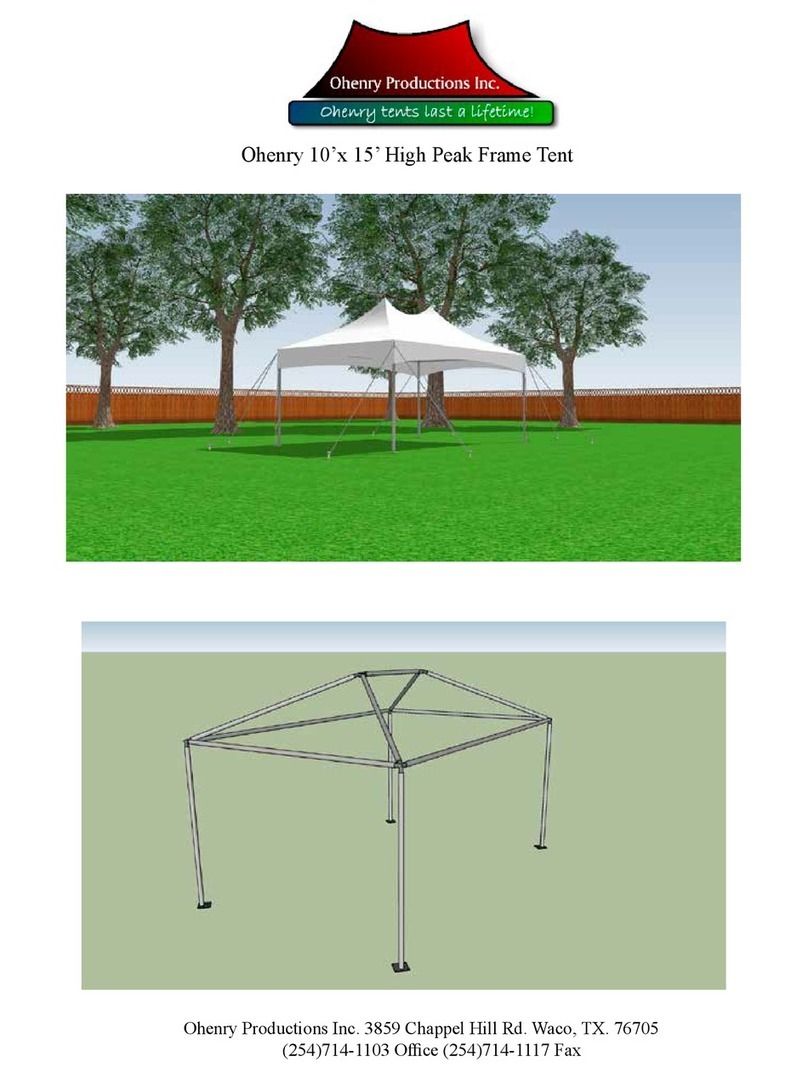
Ohenry Productions
Ohenry Productions 10x15 quick start guide
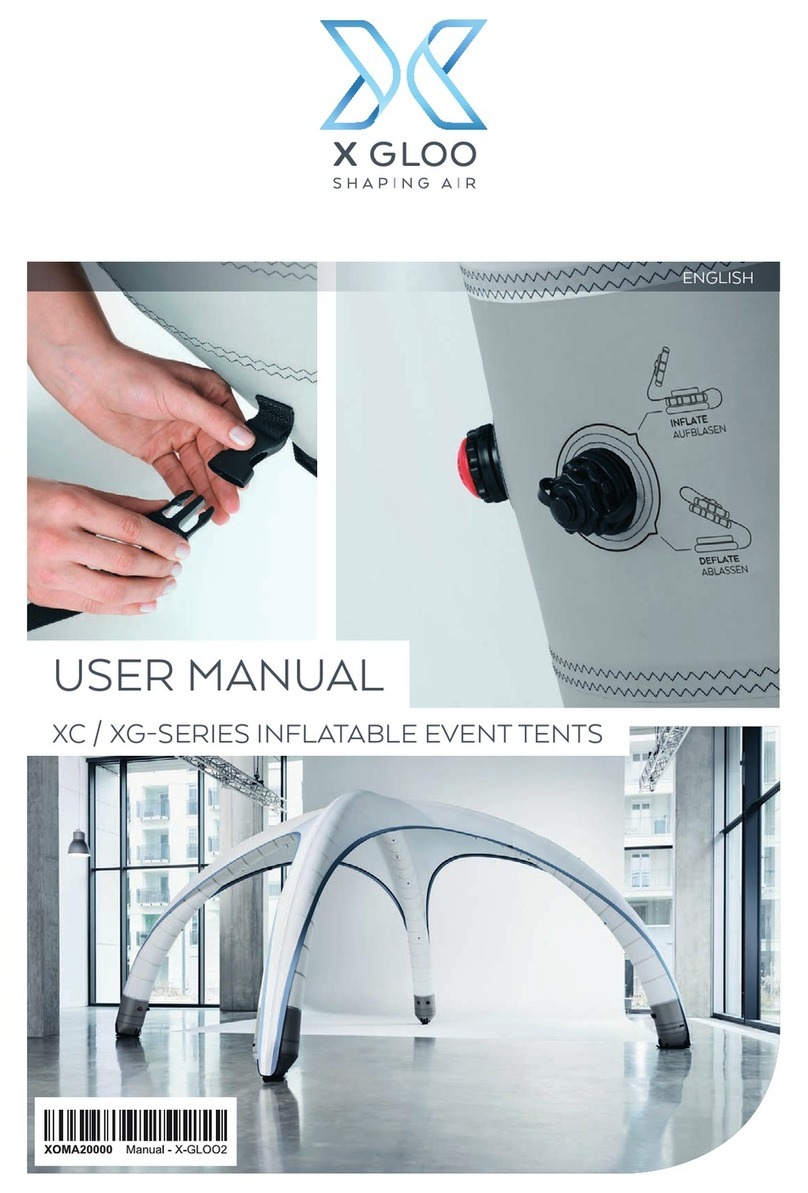
X-GLOO
X-GLOO XC Series user manual
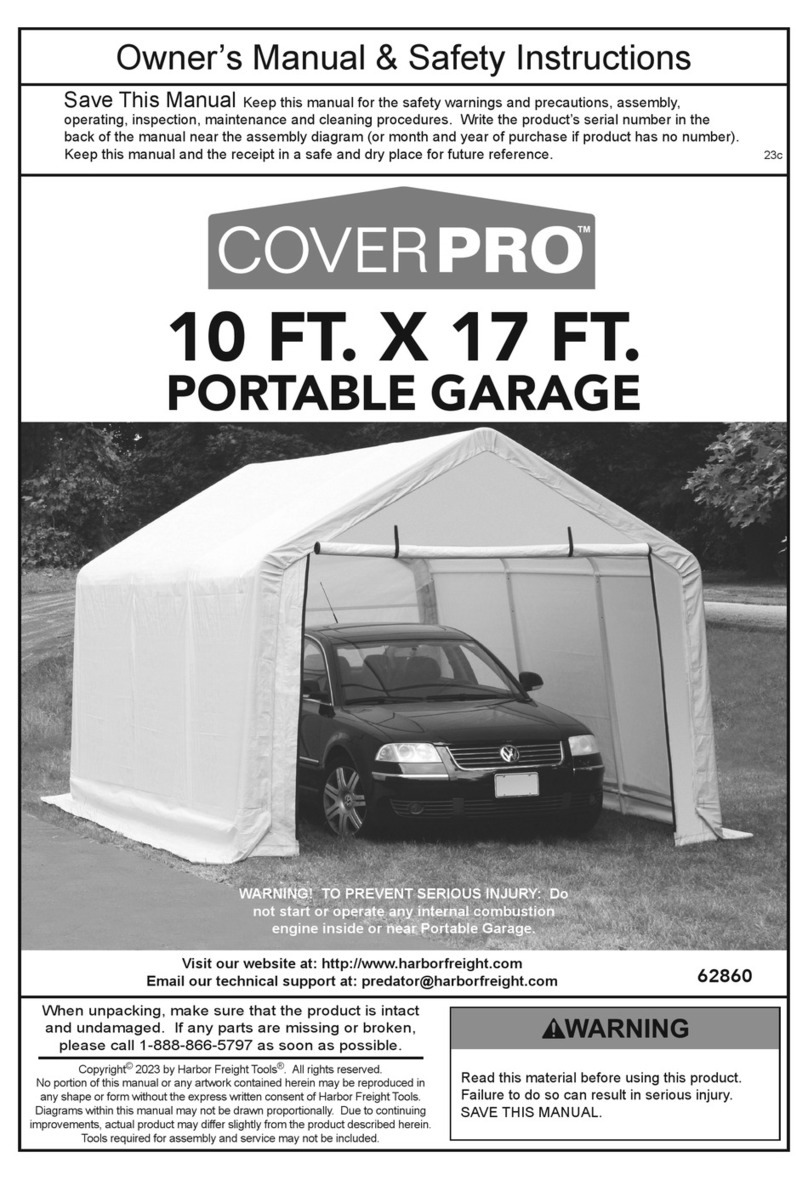
COVERPRO
COVERPRO 62860 Owner's manual & safety instructions

PACIFIC PLAY TENTS
PACIFIC PLAY TENTS Tee Pee Series quick guide
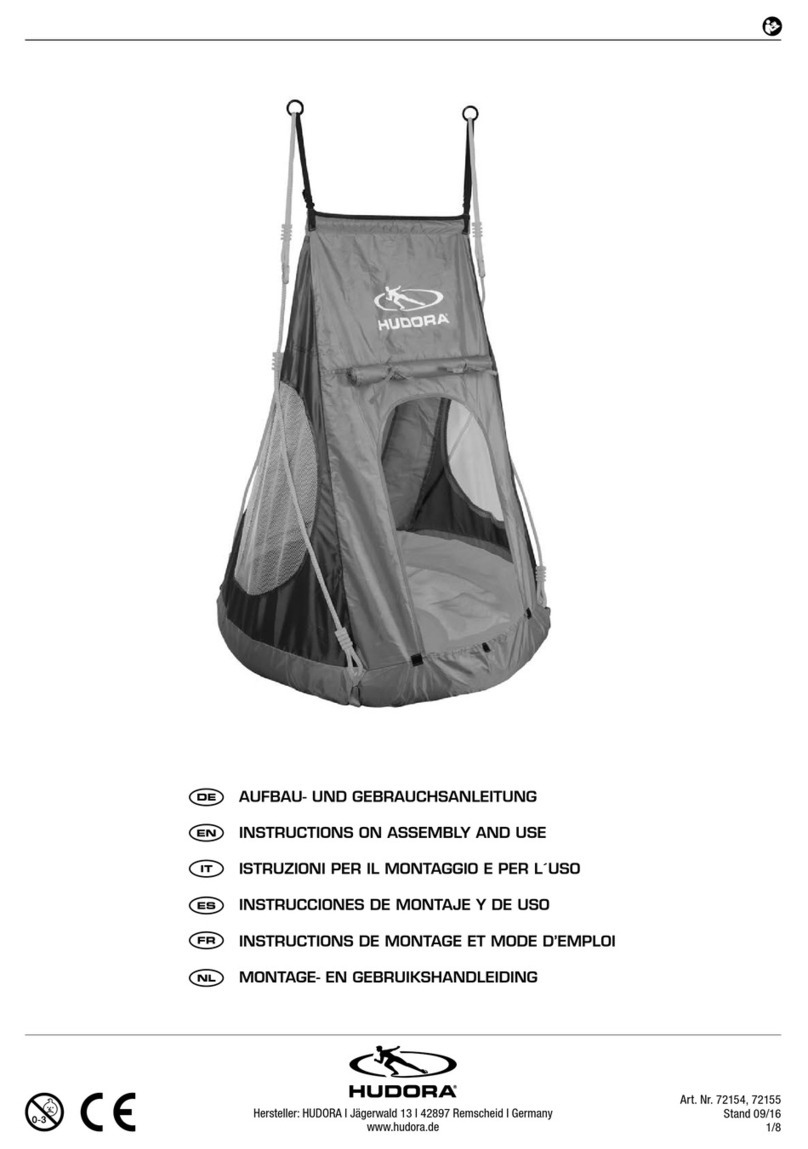
Hudora
Hudora 72154 INSTRUCTIONS ON ASSEMBLY AND USE
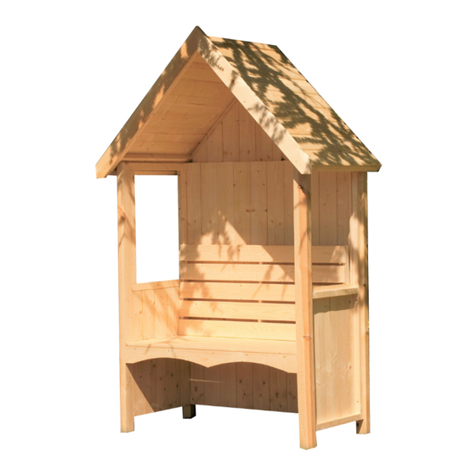
Shire
Shire Forget - Me - Not Arbour Assembly
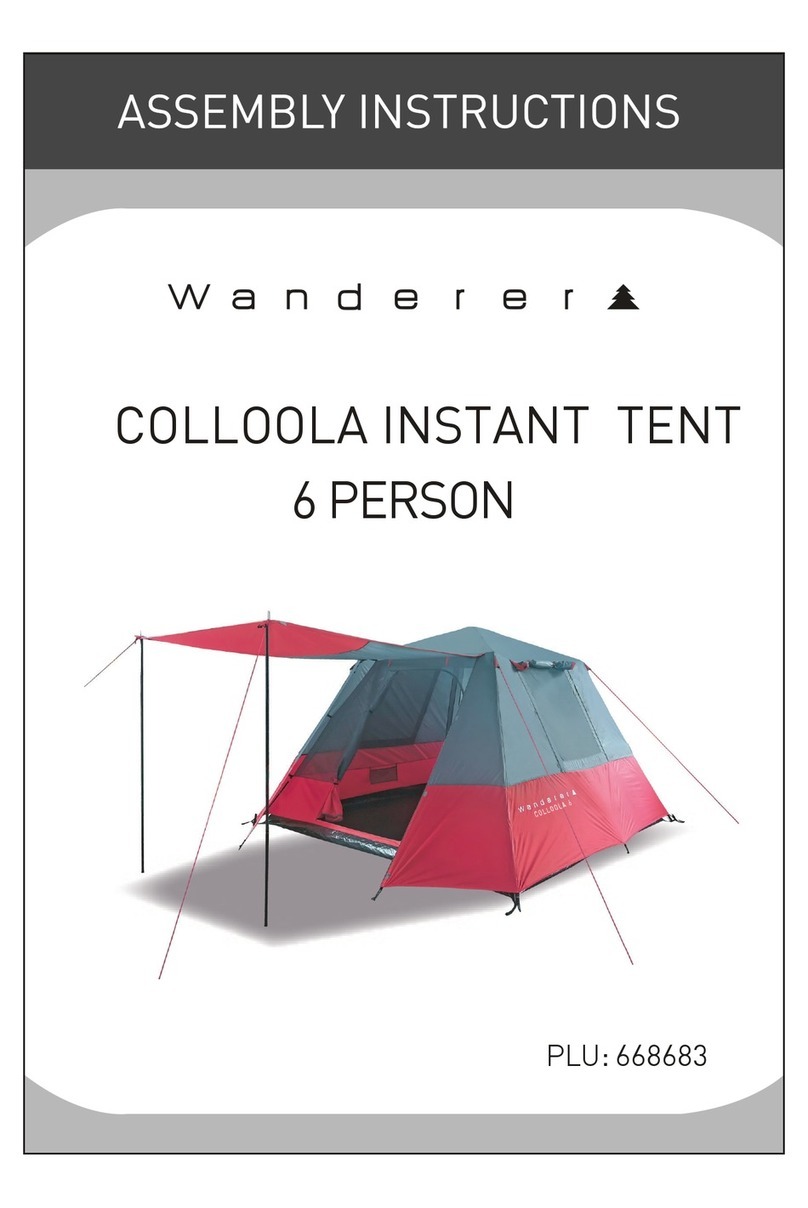
Wanderer
Wanderer COLLOOLA Assembly instructions
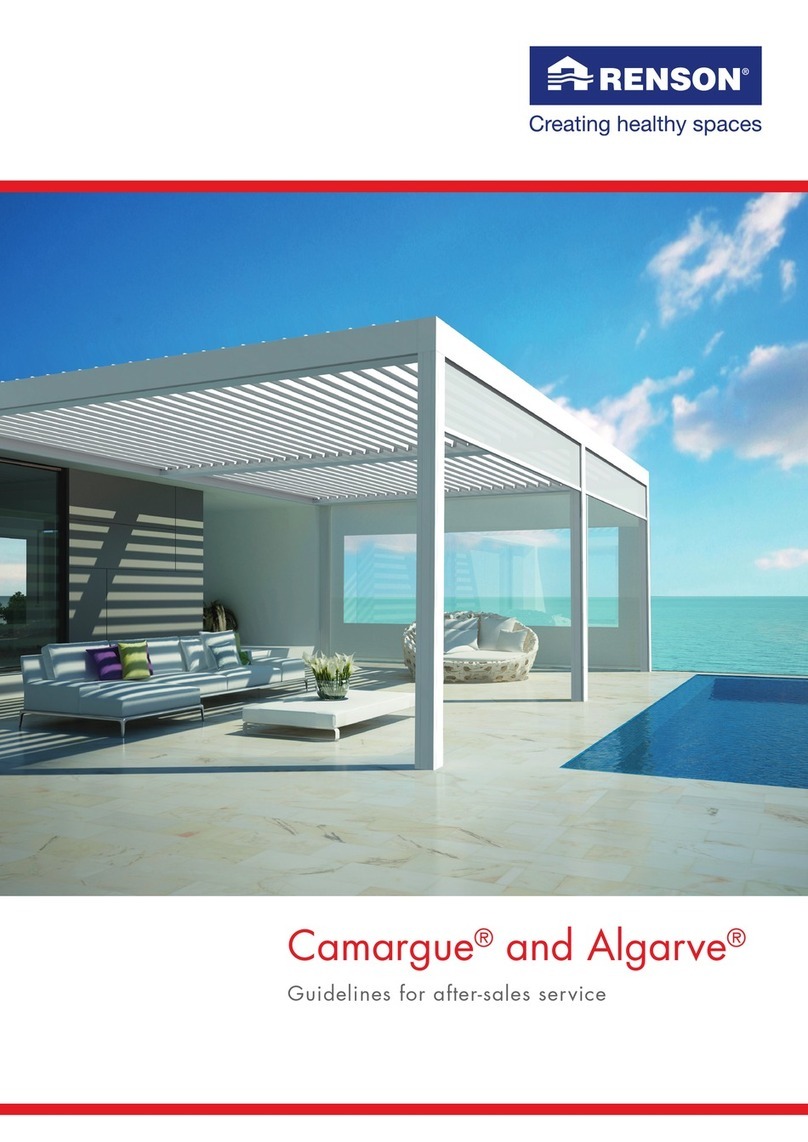
Renson
Renson Camargue Guidelines
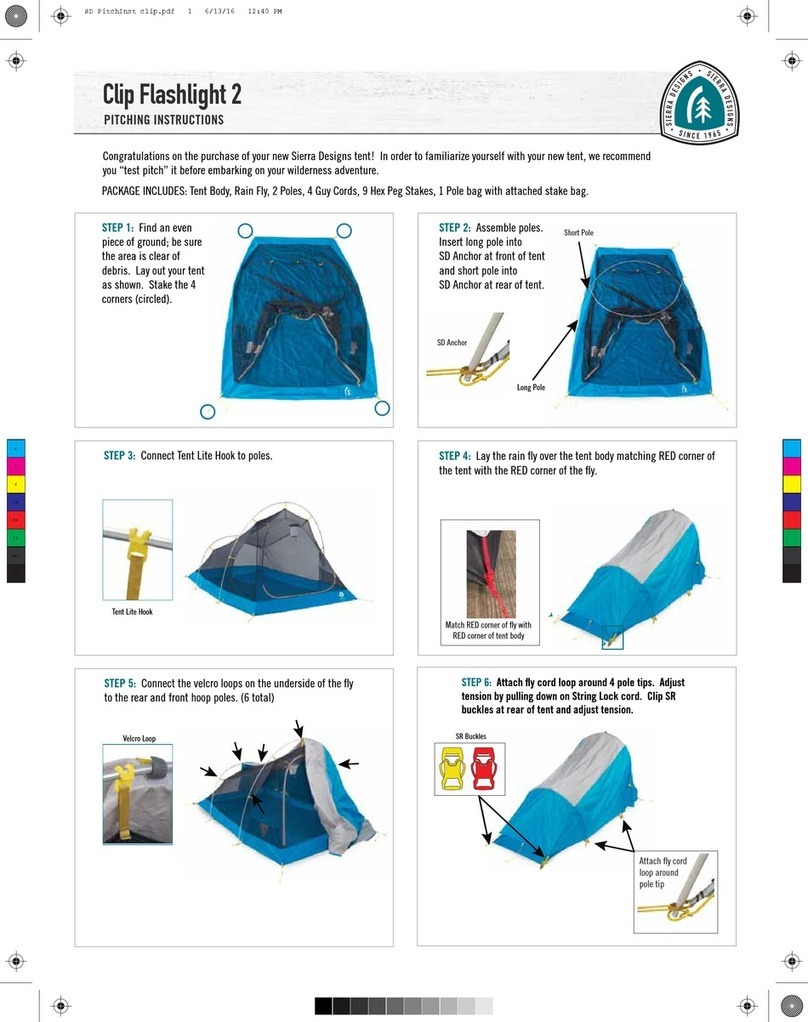
Sierra Designs
Sierra Designs Clip Flashlight 2 Pitching instructions
